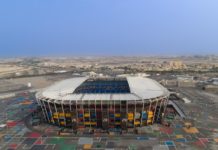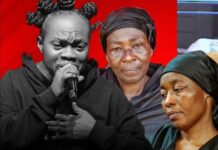
The Volta Region is one of Ghana’s sixteen administrative regions, with Ho designated as its capital. It is located west of Republic of Togo and to the east of Lake Volta.
Divided into 25 administrative districts, the region is multi-ethnic and multilingual, including groups such as the Ewe, the Guan, and the Akan peoples. The Guan peoples include the Lolobi, Likpe, Akpafu, Buem, and Nkonya (now part of Oti region) people.
Demographic characteristics
The region’s population in 2000 was 1,635,421. This implies, an increase of 35.0 per cent over the 1984 count 1,211,907, giving an annual growth rate of 1.9 per cent. The intercensal growth rate shows little change from 2.0 per cent in 1970, 1.8 per cent in 1984 and 1.9 per cent in 2000. The population density of the region increased from 59 persons per square kilometre in 1984 to 79.5 persons in 2000.
The age structure of the population indicates that all the districts of the region have a young population, typical of most developing countries. The regional distribution of the population, aged 0-14 years, is 41.1 per cent compared to 44.2 per cent in 1984. Nkwanta (47.3%) and Krachi (46.4%) have the highest proportion of the population, aged 0-14 years. The Total Fertility Rate (TFR) for the region (3.5) is lower than the national rate of 4.0. Nkwanta District recorded the highest TFR (4.4), while Keta recorded the lowest (2.6).
As is the case with a young population, the dependency ratio is relatively high for all the districts. The regional overall dependency ratio is 92 dependants to 100 working people. The sex ratio is lower than 90.0 in five districts; it is between 90.0 and 100.0 in four other districts. In the Jasikan, Kadjebi and Krachi, Districts, the sex ratios are higher than 100.0. The proportion of the population living in urban localities (population of 5,000 or more) in the region has increased from 20.5 per cent in 1984 to 27.0 per cent in 2000, with the highest proportion of the population living in urban areas the in Keta (53.0%). There are 34 urban localities in the region. Keta town (Keta) has been identified as a “dying” town which has declined at the rate of 1.9 per cent per annum over the past 30 years.
The decline in the population of Keta is due mainly to the sea erosion which caused population movements out of the town and also affected commercial and other activities. Kadjebi, Anyako and Kpedze are other urban localities which had virtually no growth during that period. Of all the urban localities, Juapong, Keta, Krachi, Banda and Worawora are the only localities where males outnumber females. For the region as a whole, the usual resident population of 1,668,568 is 2.0 per cent higher than the de facto count of 1,635,421. Except for the Ho, Hohoe and the Nkwanta, Districts, the number of people who usually reside in the districts, is more than those present on Census Night.
Social characteristics
Of all heads of households, 61.0 per cent are males, and 39.0 per cent females. A higher percentage of females (2.3 %) than males (0.6 %) are temporary household heads. Most femaleheaded households are either single person households or single parent households. Data on marital status indicate that 59.9 per cent of females and 53.6 per cent of males are currently married or are in a consensual union. In all, 13.2 per cent of persons, aged 15 years and older, were once married but are now separated, divorced or widowed. The proportion of never married males (38.3 %) is higher than that of the never married females (22.2 %).
Females in the region, who have ever been, but are no longer, married, are confronted with the many burdens and consequences of a break (voluntary or involuntary) in their marital union. Apart from losing the benefits of mutual support and companionship of a stable marital relation, they have to develop survival strategies to cope with a variety of burdens they face. At present, there are, regrettably, no effective mitigating programme packages for these burdens which, in many cases, weigh very heavily on these separated, divorced or widowed women. Marriage itself presents challenges, but being no more in a marital union, and most often being a single parent and a household head, present greater challenges for females in the region.
The predominant ethnic group in the region, the Ewe, constitutes 68.5 per cent of the total population, followed by the Guan (9.2 %), the Akan (8.5 %) and the Gurma (6.2). This pattern of distribution runs through nine of the 12 districts. In the Nkwanta District, the Gurma (44.4 %) are the predominant group while in the Jasikan and Krachi Districts, the Guan are in the majority. The variation in the ethnic group distribution and composition in the region has important socio-cultural implications that need to be taken account in both policy formulation and implementation.
About 96.0 per cent of residents in the region are Ghanaians, including 2.5 per cent naturalized Ghanaians. Of the 93.3 per cent Ghanaians by birth, 52.1 per cent are males and 47.9 per cent females. The non-Ghanaian population is very high in the Kadjebi District (16.9%). On the other hand, non Ghanaians constitute between 5.0 and 6.5 per cent of the population in four of the northern districts, Hohoe (6.3%), Jasikan (6.2%), Krachi (5.6%) and Nkwanta (5.4%). They account for between 2.5 and 3.5 per cent in three other districts and less than 2.0 per cent in four districts, Kpandu, Akatsi, South Tongu and Keta.
Christians constitute 67.2 per cent of the main religious groups in the region; adherents of Traditional religion account for 21.8 per cent and Moslems, 5.0 per cent. Those who do not practise any religion constitute 5.3 per cent while all other smaller religious groups make up 0.7 per cent. The distribution pattern of religious affiliation in the districts is about the same as the distribution in the region, except for the Kadjebi, Jasikan and Hohoe, Districts where the percentage of Moslems is higher than that of adherents of Traditional religion. The adult literacy rate in the region is 58.3per cent, made up of 68.7 per cent of males and 49.1 per cent of females. The literacy rates in the Nkwanta and Krachi Districts are low. Pre-schools, which provide child-care and learning services to children below six years of age, are becoming important in all the districts.
There is a sharp drop of the school population from primary (59.0%) to JSS (23.2%) at the regional level and higher in most districts. This may be due to the fact that some children drop out of school before entering JSS. The other reason may be that there are few new infrastructures for JSS in the districts. Efforts should be geared towards aggressively building more JSSs to uptake pupils from the primary schools. The free Compulsory Universal Basic Education programme (fCUBE) is probably beginning to yield results leading to higher primary school enrolment.
The large difference between JSS and SSS enrolment in the districts may be due to the high drop out rate, as a result of examination failure, inability to pay for SSS education, or some enrolling in Vocational, Technical or Commercial Schools. An encouraging proportion of children, especially females, are in the primary schools in the region. This raises the important issue of the extent to which a significant proportion of those now at primary schools can be sustained and retained in the educational system at higher levels. The next issue is that of the infrastructural facilities at the next higher levels, necessary to accommodate and effectively absorb substantially higher proportions of students seeking admission to the higher levels.
Children and wards in SSS, become important factors in children’s education at SSS level and beyond. It is therefore an important and necessary policy and programme concern, for the region’s development, to expand educational institutions and empower and encourage parents and guardians to send, and maintain their children and wards, in all levels in the educational system, especially SSS and beyond.
Current Enrolment in vocational/technical/commercial education remains regrettably very low for both males (2.4%) and females (1.7%) in the region. Since such schools require much investment in equipment and other infrastructure, they need not be multiplied in each district. It must however be ensured that the facilities exist in the region and are sufficiently well equipped to train the right calibre of students. In addition to this, lucrative job openings in the region must be assured to absorb, those who complete their training in these Vocational, Technical and Commercial Institutions and the Polytechnics after training. Investment in education, especially in SSS education and beyond, which is indispensable for the human resource development of the region, should therefore be a major focus of regional and district development programme planning and implementation.
Economic characteristics
About 72.4 per cent of the population, 15 years and older, are economically active, with a slightly higher proportion of males (73.1%) than of females (71.8%). The computed general activity rate for males (79.8%) in 2000 has not increased much over the 1984 figure (79.7%). That of the females decreased by 8.3 per cent from 85.3 per cent in 1984 to 77.0 per cent in 2000. For all the 15 districts, all three computed activity rates, the crude, the general and the refined activity rates show that the Krachi has a very high participation rate ahead of Nkwanta and Akatsi.
Of the economically active population, 92.5 per cent are employed in various industries, with 7.5 per cent unemployed. The rate of unemployment is highest in Kpandu (11.1%), followed by Jasikan (10.4%) and Ho (10.5%). The rest of the districts have a single digit unemployment rate ranging from 3.4 per cent for Nkwanta, to 9.7 per cent for Hohoe. The rate of unemployment is higher among females than males in seven of the 15 districts. Students constitute (31.1%) of the non-economically active population in the region.
Workers in the agricultural and related occupations are in the majority in all the districts. Males predominate in the following four occupational categories: Professional/Technical and related workers, Administrative/Managerial, Clerical and related workers and “Others”. Females constitute the majority in three occupational categories, namely, Services, Sales and Production/Transport Operators and labourers. Agriculture/Hunting/Forestry remains the largest industry in the region and in the districts, except Keta and Krachi, districts where Fishing is the main and the second industry respectively. Additionally, males outnumber females in the Construction and the Transport/Storage and Communication industries while females predominate in the Wholesale/Retail and the Hotels/Restaurants industries.
Majority of the people in the region are self-employed. Almost every four out of five working people are self- employed. In the districts, on the average, 13.6 per cent of the males and 6.1 per cent of the females, are employees (i.e. employed by other people or establishments). The private informal sector engages eight out of every 10 working people, while the private sector, as a whole, employs nine out of every 10 people in every district.
Policies aimed at improving the private sector and creating an enabling environment in the region should therefore aim at capacitating small scale enterprises to expand their base and be able to absorb extra labour. The self-employed without employees in the private informal sector, many of whom are not even properly registered, also raise problems of mobilisation for such social welfare issues as social security and health insurance, which are becoming important concerns for Government. Appropriate policies to integrate this sector into the various social sector schemes will therefore need to be evolved since such integration can even have an indirect positive effect on the growth and expansion of private sector enterprises.
Housing and community facilities
There are 376,204 dwelling units in 264,451 houses across the region, on March 26, 2000, representing an increase of 52.8 per cent in the housing stock since March 1984. In all, there are 345,821 households in the region, which translates into a ratio of 1.3 households per house, the lowest in the country.
Mud/mud and bricks/earth are the main materials used in constructing walls of dwelling units, followed by cement block/concrete, leaf/thatch, wood and burnt brick, in that order. Corrugated metal sheets are the main roofing materials in nine of the 12 districts. In the Krachi, Nkwanta and Akatsi, Districts, there are more thatch/palm leaf roofed houses than in any other district. In the southern part of the region, especially in the Keta District, 30.6 per cent of houses are roofed with asbestos sheets. At least about a third of dwelling units in every district have the floor constructed with cement.
In six of the 15 districts, over a third of the households have pipe-borne water as the main source of drinking water. The river/stream is the main source of drinking water for at least a third of households in the districts, except Keta, Ketu and Akatsi. In the Keta, and Ketu Districts, the well is the main source of drinking water for majority of the households and in the Akatsi District; in particular, a little over a third of the population relies on other sources of water supply such as dams, springs and rainfall. This observation is supported by the fact that in the Ketu, Akatsi and southern Ho, Districts in particular, there are deliberate attempts at harvesting rainwater for household use.
The kerosene lamp is the main source of lighting in many households in every district in the region. Gas lamps are not common in any of the districts while solar energy, as a source of lighting, is not used in eight of the 12 districts.
At least 90.0 per cent of households in every district in the region use wood and charcoal as fuel for cooking. Apart from the Ho (5.0%), Keta (2.8%), Hohoe (2.2%) and Kpandu (2.0%), Districts, less than 2.0 per cent of households, in all other districts, use gas for cooking. About a quarter of the households in the region do not have any toilet facility. The situation is more serious in the Nkwanta and Keta Districts. Less than 8.0 per cent of households in all the districts of the region use the water closet; public toilets and pit latrines serve the needs of an average of 30.8 per cent in the Nkwanta, and 21.2 per cent in the Keta, Districts.
Only a small proportion of households (1.3%) dispose of liquid waste through the sewerage system in the region; this proportion is less than 1.0 per cent in the districts except Ho (3.8%) and North Tongu (2.2%). At least 80.0 per cent of households in every district dispose of liquid waste on the compound of houses and on the streets outside.
In sum, the Nkwanta and Krachi Districts are the most deprived districts in the region, outside of Akatsi in the south. These two districts have good agricultural land but the road network linking them to the rest of the region is in a deplorable condition. It is important for stakeholders in the region to seriously work towards the rebuilding of the major trunk roads to link the two districts to the northern part and the rest of the districts to the south, to avoid food produced in these districts from going waste. It is also important to revisit the irrigation projects in the Krachi District, which were planned alongside the creation of the Volta Dam, some years ago. In tune with the benefits of the creation of the Volta Dam, is the development of a modern port at Torkor, in the Kpandu District. This, as in the case of the irrigation projects, has not been realized and it is time to reconsider this.
It would enhance good health practice if stakeholders can create an awareness that will make communities in the region realize the need to construct toilet facilities (even if pit latrines) so as to reduce the use of the bush and the seashore, as toilet facilities.
Ghana changed from the Local Authority system of administration to the District Assembly system in 1988. The country was demarcated into 138 districts out of the existing 140 local authorities. The boundaries of the districts do not necessarily coincide with the boundaries of the Local Authorities but are coterminous with regional boundaries.
Physical features
Area
The Volta Region is located along the southern half of the eastern border of Ghana, which it shares with the Republic of Togo. Greater Accra, Eastern and Brong Ahafo regions share boundaries with it on the west, on the north by the Northern Region, and on the south by the Gulf of Guinea. The region occupies an area of about 20,570 square kilometres or 8.6 per cent of the total land area of Ghana.
Vegetation
The region has a length of about 500 kilometres, stretching from the south to the north. It encompasses most of the vegetation zones found in the country, that is, the coastal grassland and mangrove swamps, replete with sandy beaches, the guinea savannah through moist semideciduous forests in the central highland areas to the undulating sahel-savannah and the mountainous wooded savannah in the north.
Climate
As in all other parts of the country, the Volta Region has a tropical climate, characterised by moderate temperatures, 21-32° Celsius (70 – 90°F) for most of the year. The region has two rainfall regimes in the year, the first; from March to July and the second from mid- August to October. Rainfall figures, which vary greatly throughout the region, are highest in the central highland areas and in the forest zone; they are lowest in the sahel-savannah zone in the north of the region. The maximum average annual rainfall figure is 2,103mm and 1,168mm, minimum. More than half of the land area of the region falls within the Volta River Basin, with the Volta Lake draining a substantial portion of the region.
The region’s mountains form part of the Togo Range, which stretches from parts of the Ashanti and Eastern Regions into the Republic of Togo. The highest mountain in Ghana, Mount Afadzato (Avadzeto), located in the Hohoe District, is part of this range. This mountain, together with several picturesque physical features such as the Vli waterfalls, near Mountain Gemi (Amedzofe) and the monkey sanctuary in Tafi (Hohoe district), are some of the region’s tourist attractions.
Political administration
With the exception of the south most part, most of the region north from Ho, was part of the German colony of Togoland. The south most part, which was first colonized by the Danes and later on transferred to the British, was administered as part of the Gold Coast, now Ghana.
After the defeat of the Germans in World War I, the German colony of Togoland was partitioned. One portion was placed under the protectorate of Britain and became known as the British Togo. The other, under French protectorate, became the French Togo, now the Republic of Togo. Both Togo under the British protectorate and Togo under the French protectorate were under the umbrella and supervision of the Trusteeship Council of the League of Nations, now the United Nations.
While Togoland under French Trusteeship was administered by its own Governor appointed by the French, the British protectorate of Togoland, later to be known as the Trans-Volta Togo (TVT), and then as the Volta Region (VR), was administered by the Governor of the Gold Coast who reported on the British protectorate directly to the Trusteeship Council of the League of Nations, now the United Nation (U.N). In 1954, the U.N sent a Visiting Team to the British Togoland. This team recommended a plebiscite to be held in 1956 to decide on the wishes of the people on the issues of whether the Trust Territory should be integrated into, or secede from, the Gold Coast.
The result of this plebiscite was not decisive. However, when it became clear that the Gold Coast was to become independent in 1957, the British Government formally informed the Trusteeship Council that it would not be possible for Britain to administer the British Protectorate, then the Trans-Volta Togoland (TVT) separately, after the Gold Coast became independent. The British Government therefore recommended that the Trans Volta Togoland be integrated into the Gold Coast. This suggestion did not go down well with a portion of the people, particularly the Ewe speaking, who opted in the plebiscite to join the French Togo, which then attained the status of an “autonomous republic.
After independence, the Parliament of Ghana adopted a resolution to merge and integrate the Trans Volta Togo with Ghana, under the name Volta Region. The structure of the decentralized administrative system is made up of the Regional Coordinating Council and the District Assembly. The Regional Co-ordinating Council (RCC) comprises the Regional Minister who is the overall political head of the region, his Deputy, representatives of the Regional House of Chiefs, the District Chief Executives of the region, the Presiding Members of the 12 Districts Assemblies and representatives of the various decentralized Ministries, Departments and Agencies (MDAS). The Regional Co-ordinating Council is headed by the Regional Coordinating Director who act as the Secretary to the RCC and has the overall responsibility for the local government administration of the region.
The District Assembly is to “exercise power and administrative authority in the District, provide guidance, give direction to, and supervise all other administrative authorities in the district”. The District Chief Executive (DCE) is responsible for the day-to-day executive and administrative functions of the District Assembly and is the chief representative of the Central Government in the district. He is appointed by the President with the prior approval of not less than two-thirds majority of the members of the Assembly present and voting at the meeting. The District Co-ordinating Director (DCD) who heads the district bureaucracy and is Secretary to the Assembly, assists the DCE. The Assembly itself has Urban, Zonal and Town/Area Councils, which are supported by Unit Committees. Constituencies, which are either a smaller zone of the District or in some cases, just the same as the District, elect members to the national parliament.
The constituencies, which are either a smaller zone of the district or in some cases, just the same as the District, elect members to the National Parliament. The Area Councils and the Unit Committees also elect members who are responsible for the organization at the lower levels of the political administrative structure.
The highest political body is the Regional Coordinating Council, which is chaired by the Regional Ministers, and has representatives from the various District Assemblies, the Regional House of Chiefs and heads of various decentralised MDAs. The Regional Coordinating Director is the secretary to the Council. The District Assembly is presided over by the Presiding Member who is elected by at least two-thirds of the members present and voting.
Cultural and social structure
Ethnic/language groups
The people of Volta Region are part of the larger Ghanaian population with just about every ethnic/language group represented in the region. Eight major ethnic groups are represented in the region and about 62 sub-groups speak 56 dialects.
The classification of ethnic groups is based on that of the Bureau of Ghana Languages. The main ethnic group is the Ewe (68.5%), followed by the Guan (9.2%), the Akan (8.5%) and the Gurma (6.5%). The Guan is made up of over 18 sub-groups while the Akan comprises over 19 sub-groups. The Gurma has about 8 sub-groups and accounts for about 6.5 per cent of the population. Each of the other ethnic groups in the region (the Ga-Dangme, Mole-Dagbon, Grusi and the Mande-Busanga) represents less than 2.0 per cent of the population.
The social structure
The people of the region are organized under chiefs at the lineage and settlement levels. A lineage comprises extended families that trace their genealogy to the same ancestor. The extended families also have heads who are most often the oldest male. Ownership of property is passed on by patrilineal inheritance in 11 of the 12 districts. Some lineages in the Kadjebi and a few in the Jasikan Districts are of the Akan lineage, and practice matrilineal inheritance.
The Volta Regional House of Chiefs, like similar institutions in the other regions, was established by statute in 1958. By Legislative Instrument 991 of 1974, defined the composition of the Volta Regional House of Chiefs to consist of 15 paramount chiefs (in charge of 15 Traditional Councils) and 17 rotating members (from 17 groupings) bringing the total membership to 32.
The Traditional Council is composed of several Area Councils. Basically, the traditional authorities administer stool lands, holding them in trust for the people, and arrange the celebration of traditional festivals. They are also the custodians of traditional beliefs and customs, passed on from one generation to another. The traditional authorities also have courts which adjudicate on matters relating to stool lands, lineage and family lands, chieftaincy title disputes, violations of traditions and disputes between localities, lineages, families and individuals. In the Volta Region, no Paramountcy owes allegiance to another Paramountcy.
Religion
The people of the region originally practised the Traditional religion. However, over a century and half ago, with the arrival of Christian missionaries in the region, many have converted to Christianity. While the Ewe, Guan and the Akan are mostly Christians, majority of the Hausa, Kyamba, Kotokoli, Kokomba, Nanumba and Gurma, particularly in the northern districts, are Moslems.
Of a total population of 1,635,421, 67.2 per cent are Christians; 21.8 per cent practise Traditional Religion, and 5.1 per cent are Moslems. The proportion of males (66.8%) who subscribe to the Christian faith is, however, slightly lower than that of the females (67.5%). Among the Christian group, the proportion of females (42.0%) in the Protestant and Pentecostal churches is higher than those of the males (40.6%). A larger proportion of the female population (22.3%) practise traditional religion than males (21.2%); In the case of Islam the reverse is the situation. It shows that a higher proportion of males (5.7%) than females (4.9%) do not subscribe to any religion.
Demographic characteristics
The population of the Volta Region as 1,635,421. This shows an increase of 34.9 per cent over the 1984 , giving an average growth rate of 1.9 per cent per annum compared to 1.8 per cent for the period 1970-1984 and 2.0 per cent for 1960-1970. Except the population density of 79.5, which is slightly higher than the national average (79.3), all the other demographic indicators are much lower than the national averages for 2000.
As the population of the region has increased over the years, so has the urban population been increasing, from 10.0 per cent in 1970 to 27.0 per cent in 2000. Similarly, the population density has also increased from 46.0 per cent in 1970 to 79.5 persons per square kilometre in 2000. The sex ratio, on the other hand, has shown little change, declining from 93.9 to 92.5 males per 100 females, between 1970 and 2000. The structure of the pyramid is generally of a bell-shape with a broad base, which tapers off with increasing age. There are, however, exceptions in three age groups, namely 5-9 years, 35-39 years and 60-64 years, which have larger populations than those of their immediate younger groups, for both males and females.
With increasing age, the structure looks slightly thinner for the males than for the females, indicating that, at the older ages, the proportion of males is lower than that of the females, except for two age groups; 10-14 years and 15-19 years. A slightly broader base of the structure for the females is also visible indicating more females than males. The 75 years and older age group includes ages from 75 to 99 years, which gives it the unusual broad top. The age pattern of the pyramid is typical of most developing countries population age structure. In addition, the age sex pattern suggests that more females are living longer than males, particularly at the older ages.
Economic characteristics
This section presents background information and some highlights on the economic characteristics of the population of Volta Region, based on the 2000 Census. Detailed analysis of the districts in the region are presented in Chapter Four. The economic characteristics of a population indicate, among other things, the type of economic activities pursued by individuals and groups, and the contributions of the various sectors to the total output of the population. The 2000 Census collected information on five main economic activities, namely, the type of activity, occupation, industry, employment status and institutional sector .
In 1960, questions on economic activity were asked of all persons aged 15 years and older. In 1970 and 1984, similar questions were asked of persons aged 10 years and older. For the 2000 Census, however, the eligible persons were those aged seven years and older. The revision of the eligible age downwards from 15 years in 1960 to seven years in 2000 is due to the fact that an increasing number of younger members of the household are entering the work market. This raises concern for child labour. For both the 1960 and 1970 censuses, the reference period was the four weeks immediately preceding the census night while in 1984 and 2000 the reference period was the seven days preceding the census night.
The economically active population or the potential work force of the country, and for the region, is made up of all persons aged 15-64 years, who are available and ready to work, for the production of goods and services. In all societies, however, there are people outside this group who engage in activities for themselves or their families. For instance, it is observed that children, as young as seven years, do engage in family enterprises, while retired persons also engage in active economic pursuits. In this report, the population of interest covers those aged 15 years and older; those aged 7-14 years are discussed briefly for the purposes of studying working children.
Type of activity
The data on type of activity was obtained from responses to how individuals, aged 15 years and older, were occupied during the reference period. It shows that 52.3 per cent of the population aged 15 years and older constitute the potential active population. Of the total number of persons available for work, 92.5 per cent were employed, with the remaining 7.5 per cent unemployed during the period. The proportion of employed males (92.8%) is almost the same as that of females (92.3%). The non-economically active population comprises 27.6 per cent of the total population aged 15 years and older. The proportion of non-economically active females (28.2%) is higher than that of the males (26.8%).
Occupation
A little under three fifths (59.7%) are in Agriculture and related occupations. Slightly higher proportions are in Production, Transport and Equipment Operation (13.7%) as in Sales Work (12.8%). Professional, Technical and Related workers account for 6.3 per cent and Services (3.9%).
The percentage of Clerical and related workers in the region is low (2.8%); all other groups of workers constitute less than 1.0 per cent. Males are mainly in Agriculture and related work (61.9%), Production, Equipment Operation and related work (15.5%), and professional and Technical work (8.2%). On the other hand, females are in Agriculture (57.7%) followed by Sales (19.2%) and Production, Transport and related work (12.1%). Except in Sales work, males predominate in all other occupations.
Industry
Majority of the people in the region are engaged in Agriculture. The region has substantial agricultural resources, which include large expanses of land of which an estimated 1,028,500 hectares are suitable for general agriculture (i.e. cultivation of crops and rearing of animals). Currently only 29.0 per cent of the total arable land of the region is under cultivation. The major agricultural products include cocoa and staples such as maize, rice, sorghum, cassava, yam, cocoyam and plantain.
The region used to be one of the country’s major cocoa growing areas, mainly in the northern districts of Hohoe, Jasikan, Kadjebi and Nkwanta. It was the cocoa industry that made Hohoe a very important commercial town and the capital of the Trans-Volta Togoland before the capital was removed to Ho. It was also responsible for the considerable in-migration of various ethnic groups from northern Ghana to the northern districts of the region. The cocoa industry has however declined over the years as a result of agronomic and political problems. With the Volta River and the Volta Lake running almost the whole length of the region, there is a good potential for inland fishing as well as irrigation. The Volta River and Volta Lake are the largest sources of Ghana’s fresh water fish but irrigated agriculture is yet to be exploited. Shallot, which is exported to many parts of West Africa, is cultivated on a large scale by irrigation, using ground water and borehole.
Animal rearing ranks next to food crop production in the region, with a large number of cattle, sheep and goats. The cultivation of non-traditional crops like black pepper, cashew nuts, ginger, pineapple, pawpaw and mangoes, meant for export, are on the increase. The 2000 Census shows that 55.3 per cent of people in the region are in agriculture. This does not include the number of people engaged in agro-processing, which represents the manufacturing industry in the region (10.2 per cent of the workforce) is involved. Apart from agriculture and manufacturing, there are activities in several other industries like mining (Kaolin) and quarrying, wholesale and retail trade, tourism and construction.
The distribution of the economically active population by employment status and sex of the 697,752 persons aged 15 years and older, made up of 331.188 males and 366,564 females. Majority (78.0%) are self-employed without employees, and an additional 3.5 per cent are self-employed with employees. Together, these two categories of selfemployed persons account for 81.5 per cent of all employed persons, with females in the majority. Employees in the region form only 10.0 per cent of the working population. Whereas the same proportion of males (0.4%) and female (0.4%) are domestic employees, a slightly higher proportion of males (2.6%) than females (2.1%) are in apprenticeship. A higher proportion of females (6.0%) than males (4.8%) are in unpaid family work.
The information on the institutional sector in the region shows that the private informal sector provides about 82.9 per cent of all employment and the private formal, 10.4 per cent. Thus, the private sector alone absorbs 93.3 per cent of people on the job market. The public sector accounts for only 6.1 per cent with the semi-public/parastatal providing 0.2 per cent of jobs in the region. This underscores the crucial importance of the private sector in the economy of the region of which it constitutes the key to economic growth and associated developments in the region. The sector provides avenues for involvement in economic and work activities, particularly to women, irrespective of their formal educational background.
The operation of the private sector in the region, as it is in the country as a whole, is however such that it neither benefits the Government’s revenue mobilization programme nor the workers in the sector, in terms of health and welfare. It is wrth noting that 48,205 of the 344,546 children, 7-14 years (14.0%), were recorded as working; 2,506 (0.8%) had a job but did no work and 6,180 (1.8%) claimed to be unemployed. There is not much difference between the males and the females.
DEMOGRAPHIC CHARACTERISTICS
Population size, growth rates and density
Kadjebi, once a booming cocoa growing district and a market centre, is the least growing and the least populated district in the region mainly because of the collapse of the cocoa industry in that district and the region as a whole. The growth of Ho is due to its status as both a district and a regional capital while the growth of Aflao is mainly due to is location as a busy entry point from Togo, Benin and Nigeria into Ghana.
Age-sex structure
Information on the sex composition and the age structure of the population of the Districts serves as a useful guide to demographic trends in the region. The age structure can be broken down broadly into the categories of 0-14 years representing the young dependent population, 15-64 years representing the non-dependent population and 65 years and older representing the old age dependent population. For the 2000 Census the proportion of the population aged 0-14 years is 41.1 per cent while in 1984, the proportion was 44.2 per cent. Similarly, in the 2000 Census the proportion of population aged 15-64 years increased slightly from 50.2 per cent in 1984 to 52.2 per cent in 2000.
The first pattern is a low sex ratio of the populations of South Tongu, Keta, Ketu and Akatsi, where the ratios are as low as 83 to 89 males per 100 females. The second pattern, which consists of districts with a moderate sex ratio, includes North Tongu, Ho, Kpandu and Hohoe, where there are between 90 to 94 males per 100 females. The third pattern consists of the following districts with high sex ratios, 98 to 107 males per 100 females Jasikan, Kadjebi, Nkwanta and Krachi Since these four districts are the typical farming areas of the region, the higher than average male presence may imply male in-migration to these districts.
It is equally possible that females may also be migrating out of these districts to large urban areas such as Accra. For example, Kpandu and the two Tongu Districts are typical fishing districts where male migration may increase the existing male population. Nkwanta and Krachi have an age-sex structure that is different from the rest of the regional pattern. For these two districts, the population aged 0-14 years is 47.3 per cent for Nkwanta and 46.4 per cent for Krachi compared to an average of 41.1 per cent for the other 10 districts. While all other districts recorded a proportion of 12.0-15.0 per cent for the 0-4 years age group, the corresponding figures are 19.1 per cent for Nkwanta and 17.5 per cent for Krachi. Similarly for the 5-9 years age group, Nkwanta and Krachi recorded higher proportions of 11.2 per cent for Nkwanta and 12.4 per cent for Krachi.
Despite the differences at the extreme ages, the proportion of the total population in the prime working ages and the ages of highest fertility, 20-44 years, is almost identical for all the districts. This is a characteristic feature of most populations with between 30-35 per cent of the total population falling between age group 20-44 years, irrespective of their age composition. Differences in birth rates are the principal explanation for differences in age composition, so that districts with higher birth rates have a younger age composition, as is the case of Nkwanta and Krachi, whereas those with lower birth rates have an older age composition.
Males aged 0-14 years outnumber females of the same age group, while females in the older age segment 15 years and older outnumber their male counterparts. This pattern of age distribution suggests a typical demographic pattern of higher female survival in the older age segments.
Sex ratios and population pyramids
The age distribution by sex for nine of the 12 districts follows the same pattern; the exceptions are Kadjebi, Nkwanta and Krachi where females are substantially more than males in the younger age segment. The 844,535 females and 790,886 males enumerated in the region in 2000, translate into a sex ratio of 93.6 males per 100 females, which is virtually the same as the 93.9 ratio in 1984.
The age structure, for the region as a whole is typical of a high fertility regime, with the young-age population. A population has a broad base and relatively small shares at the upper ages may be identified as a high-fertility population. The most prominent feature of the age structure of the districts is that the age group 5-9 years constitutes the largest cohort in all the districts, except Nkwanta and Krachi, where the highest concentrations are in the 0-4 and 5-9 year age groups. Therefore it is clear from the population age structure that the region still has a high fertility regime and that the need to continue to educate couples to adopt low fertility life styles is worth supporting.
Dependency ratios
For the region as a whole, the dependency ratio is 91.8, made up of 12.7 for old dependency and 79.1 child dependency compared with the remaining nine districts with less than one dependent per working population particularly Ho (80.0) which has the lowest. Krachi (102.4), South Tongu (103.4) and Nkwanta (107.2), all have more than one dependent per working population.
Birthplace and migratory pattern
A little more than three quarters (76.5%) of the population of the region are Ghanaians by birth and parenthood and were born in the locality of enumeration. In addition, 14.9 per cent were born in another locality in the region. It is therefore, only 8.6 per cent of the people enumerated in the region during the 2000 Census who are migrants to the region. Migrants to the region are mostly from the Northern (1.9%), Greater Accra (1.8%) and the Eastern (1.4%), Regions which all share common boundaries with the Volta Region.
The various districts closely follow the regional pattern with a slight variation for Nkwanta and Krachi, which are geographically very close, and culturally similar to the Northern Region. Almost seven out of ten people, whose birthplaces are not the Volta Region, can be traced to northern Ghana. For all other districts, birthplaces other than districts in the Volta Region can be traced mainly to Greater Accra and the Eastern Regions and, to some extent, to the Ashanti Region, particularly in the case of those from South Tongu. Another origin of migrants into the region is the ECOWAS States. Because of proximity to the Republic of Togo and because of cultural factors, Keta, (2.4%) Ketu, (1.9%) Ho (1.4%) and Kadjebi (1.0%), together have most of the people from ECOWAS states.
Population distribution (rural-urban composition)
The Volta Region accounts for 8.6 per cent of the country’s population and has majority of its population (73.0%) living in rural areas. The most urbanized parts of the region are in the south; these include Keta the most urbanized district with more than half (53.0%) of the district’s population living in urban areas. The Ketu district, which has little more than one in three (34.8%) of the district’s population living in urban areas, is also relatively urbanized, mainly as a result of the land port of Aflao. Ho, the regional capital district has a little more than a third of the district’s population living in urban areas. South Tongu (8.0%) is the least urbanized.
Of the 364 urban localitie, 34 or 9.3 per cent are in the region. Ho, the regional capital and the 14th most urbanized settlement in the country, has nearly tripled its population since 1970, as it grew by 3.1 per cent from 24,191 to 61,658 people in 2000. Aflao, the entry point between Ghana and Togo, has experienced the highest increase in population in the region (5.2%) over the past 30 years. Other fast growing urban localities in the region include Hohoe (district capital), Anloga, Akatsi district capital Dzodze (border town), Kpassa, (major market) Kpandu (district capital), Dambai (due to Volta Lake transport) and Juapong (textile factory).
Another interesting feature is the phenomenon of “dying” towns of which Keta is the best example. In 1970, the population of Keta was 14,446; this declined to 12,595 by 1984 and finally to 8,101 in 2000, i.e., a rate of decline of 1.9 per cent per annum over the past 30 years. Keta’s decline is mainly due to sea erosion. This cut off the direct route from Lome and Aflao through Kedzi to Keta and Anloga and reduced commercial activities and social interactions between Keta, the other localities in the Ketu district and the Republic of Togo.
This decline has probably contributed to the growth of other urban localities such as Dzelukope, the twelfth largest urban locality in the region. Kadjebi, an inland cocoa farming township and Anyako, which is close to Keta, are the other examples of dying townships. Kpedze has literally experienced no growth in the past 30 years, while Peki Avetile, part of a number of towns constituting the Peki traditional area, has joined the fast growing urban localities in the region. With the construction of the Keta sea defence wall and the reclamation of lost land, it will be interesting to observe population trends and movements once again.
For most urban settlements in the region, a naturally occurring feature is the imbalance between the sexes with females almost always outnumbering males. Of all the 34 urban settlements, Banda is the only settlement where males outnumber females with a sex ratio of 101.0 Juapong, Kete Krachi and Worawora, the male population is about the same as the female population, (99 males per 100 females). Because Banda is a farming community, it is likely to attract more male migrants than females. It is worth noting that the excess of females over males is not the only characteristic of urban localities in the region, there is also the availability of service facilities such as a post office, a telephone system, a hospital or a clinic and, in most cases, a senior secondary school. Besides, with the provision of good drinking water and electricity, life is made healthier, and this perhaps explains the rapid growth of some of the localities.
In the past, Dzodze and Keta grew as a result of commerce, weaving, pottery, fishing and shallot farming, while Ho, Hohoe, Jasikan and Kadjebi increased in population because they were located in cocoa, coffee and other farming activities in these areas. In 1960, the order of growth was Keta, Ho, Anloga and Hohoe. Ho has grown due to its status as the main administrative town in the region in addition to being an important market and educational town. Kpassa, in the Nkwanta district, grew from 3,944 in 1970 to 7,736 in 1984 and to 17,693 in 2000; its share in the overall increase in the regional urban population is 5.0 per cent. Another town in this category is Juapong, which grew by 33.3 per cent, most probably as a result of its location as a cotton textile factory in the North Tongu district. The Kete Krachi district has also experienced a rapid growth in urban population as its hitherto sparsely populated lands attracted migrants, especially into yam cultivation, fishing and related commercial activities along the Volta Lake.
It is worth observing that after independence, the government embarked upon an extensive programme of providing infrastructure such as roads, schools and health facilities for the country as a whole. The creation of new districts also saw the selection of a number of towns to serve as administrative centres. Trade quickly followed road building and the establishment of district and regional capitals. Many towns therefore grew as a result of trade, agriculture, industry and administration. Aflao, Anloga, Dzodze and Ho are examples of towns, which grew mainly because of trade; Hohoe, Akatsi, Kete Krachi and Jasikan, on the other hand grew mainly as administrative centres.
The period before 1970 may have attracted immigrants mainly from countries to the east of the region at a time when Ghana’s economy was relatively buoyant. The period 1970-1984 may have experienced considerable decline in migration following the 1969 Aliens Compliance Order, and possibly, a change in the country’s economy. Keta and Dzelukope suffered from loss of land due to sea erosion while Wusuta in the Kpandu District lost land as a result of the inundation of farmland, following the creation of the Volta Lake.
Kadjebi remained stable in growth, following the decline in the cocoa industry and related economic and commercial activities. Additionally, the decline in the attraction by a once vast sparsely populated, and fertile land, for prospective cocoa farmers, must have contributed to the reduction in the number of migrants entering the area, especially between 1970 and 1984. The proportion of migrants in the urban population and the sex ratio of migrants in urban centres seem appropriate for some of the explanations in the growth of some of the towns. Their directions of change could throw more light on the migration and natural increase, as components of urban growth, in the region.
Fertility
Information on fertility is crucial for district planners and others who seek to formulate explicit policies that will help bridge the gap between high population growth and economic development. Census data can be utilized to study changes in fertility but since there is no comparable census data with the 2000 Census data, the latter cannot provide a complete picture of fertility history. Hence the need to include other data sources such as the Demographic and Health Surveys etc.
The 1998 estimate of the TFR for the region is 4.4 births per woman. This means that a woman living in the region would have, on the average, 4.4 children in her lifetime if the current age specific fertility rates were to continue to prevail. The 2000 census gave a TFR of 3.5 for the region.
Data from previous demographic surveys conducted in Ghana over the last decade can be used to examine the trends in current fertility in the region. The region, like the country in general, is experiencing a slow demographic transition. Since 1988, fertility has fallen from a high of 6.7 children per woman (GSS and IRD, 1989) to 5.4 children per woman in 1993 (GSS and MI, 1994), and to 4.4 children in 1998, nearly a two child-drop in fertility over the decade. Not only has the TFR fallen in the region but also the fall is much more than the national average of 4.6 births per woman. The 2000 census recorded a TFR of 3.5 for the region, thus confirming the declining fertility in the region. The mean number of children ever born (CEB) for women aged 45-49 years in the region, also decreased from 6.7 in 1988 to 5.7 in 1998.
For the country as a whole, the proportion of married women using any form of modern contraceptive methods in the country has not increased proportionately with the fall in fertility. This pattern appears to be the reverse in the Volta Region. For example, between 1993 and 1998, the proportion of married women using any modern method of contraceptives increased substantially from 7.7 per cent to 12.1 per cent, nearly a two fold increase over the five year-period. In essence, while the proportion of women using any modern method of contraceptive increased by about 1.6 times for the Volta Region, the national increase was about 1.3 times between 1993 and 1998. Despite the decrease in the overall fertility level in the regions, the proportion of teenage mothers rose slightly from 8.6 per cent in 1993 to 9.5 per cent in 1998, suggesting that teenage pregnancy could be a problem for parts of the region.
Total fertility is too crude a measure to provide an accurate picture of the underlying features of childbearing trends. Much more can be learned about the pace of childbearing from examining fertility by age of mother. Ideally, fertility timing is best approached from a cohort perspective but since the purpose here is to examine current fertility trends, especially the more recent decline in fertility, the focus is on period fertility. Of particular concern is how different age groups of women respond to period-related changes in the districts. Different age groups of women who experience the same rate of change in fertility are analysed to uncover changes in the pace of childbearing.
There are more teenage births in six districts than the regional average. Women aged 25-29 years tend to contribute more than average fertility in the region. Districts contributing higher than average fertility for older women, aged 40-44 years and 45- 49 years, include North Tongu, Hohoe Nkwanta and Krachi. The data indicate that North Tongu, Hohoe, Nkwanta and Krachi contribute to fertility in the older age segments while Kpandu, Jasikan, Nkwanta and Krachi contribute to young age, teenage fertility. In essence, seven out of the 12 districts in the region are the main contributors of higher than average fertility. They are North Tongu in the south, Kpandu, Hohoe and particularly Jasikan, Kadjebi, Nkwanta and Krachi in the northern part of the region. Thus Kpandu, Hohoe and particularly Ho, the Capital District, and the four south most districts (Keta, Ketu, Akatsi and South Tongu) are the relatively low fertility districts in the region. In sum, the region has relatively low fertility levels compared with the country as a whole. The intercensal growth rate of 1.9 per cent is much lower than the national 2.7 per cent. TFRs in nine out of the 12 districts are lower than the national TFR of 4.0
Child survival
The region has experienced some improvements in child survival. Infant mortality decreased from 73.5 deaths per 1,000 live births in 1988 to 53.8 deaths per 1,000 live births in 1998. The under-five mortality rate similarly saw improvements over the 1988/1998 period, suggesting that there are sustained improvements in infant and child health programmes. Although the region’s infant and child mortality levels are better than the national average for the 1998 period, they are far below the levels of mortality for the Greater Accra (41.4) and Ashanti (41.9) regions, which have the lowest infant mortality rates in the country.
Accompanying the moderate declines in mortality are also improvements in maternal and child nutrition for the region as a whole. The regional data suggest that the levels of stunting and wasting have somehow minimized over the tenyear period between 1988 and 1998.
Using information on children ever born (CEB) and children surviving, Figure 3.2 illustrates information on the probability of a child dying by the age group of the mother by district for the region. The proportion dying is highest for Akatsi and Nkwanta relative to the other districts in the region. Children born to women in the younger age segments (15-24 years) in Ketu, Akatsi, South Tongu, Hohoe and Nkwanta are likely to experience higher infant and childhood mortality than children born to women of the same age groups in the other districts. On the other hand, children born to older women (aged 35- 49 years) in Ketu, Akatsi, Ho Nkwanta and Krachi Districts are at higher risk of dying than children born to similarly aged women in other districts. Ho, in particular, appears to have higher infant and childhood mortality ratios at all ages compared to most other districts. This may be due to referrals that come too late to the regional hospital and are eventually classified as events taking place in the district.
|
SOCIAL CHARACTERISTICSIntroduction Household composition and structure There are four major components of the household structure-household heads (19.7%), spouses (8.8%), children (36.7%) and other relatives (20.9%). This pattern runs through all districts with slight variations. The fact that grandchildren (8.4%) and relatives other than the immediate family (20.9%) constitute a significant proportion of the household members appears to support the view that the traditional household structure is still very much a part of the social structure of the region. The small proportions of parents or parents in-law, sons or daughters or daughters inlaw and non-relatives also appear to confirm the presence and extent of fostering in the living arrangements of households in the region, and in the country as a whole (Ghana Statistical Service, 2002). The extent to which the traditional household structure has persisted is reflective of the fact that the average household in the region is composed largely of children (36.7%), other relatives (20.9%) non-relatives (2.2%) in addition to the head (including temporary head) and spouse (29.9). The observations hold for all the 12 districts in the region, with variations in percentages, but the outcome in totality and implications, are similar. The district pattern does not deviate much from the regional pattern. Children constitute the largest component in all households, in every district, and are so distributed for both male and female-headed households. Other relatives constitute about one fourth of all households in the 12 districts. The head, the spouse, the child and other relatives constitute about eighty per cent of all households members in the districts. There are more male household heads than female heads in all the 12 districts. The ratio however varies from as high as 4:1 (i.e., four male heads to one female head of household) in Nkwanta to as low as 1:1 in South Tongu and Keta. It is also worth noting that spouses in households headed by males outnumber spouses in households headed by females. In households where there are both adult males and females, the male is more likely than the female to be head of the household. Marital status
An additional 13.2 per cent have once been in a marriage but are now either divorced, widowed or separated. In terms of male-female differences, 17.9 per cent of the females compared with 8.1 per cent of the males are either divorced, separated or widowed. The percentage of the never married, at the regional level, is 29.9 per cent, made up of 38.3 per cent males and 22.2 per cent females. This suggests that males are more likely than females to postpone marriage. There is not much variation between the districts except that Nkwanta has a higher percentage of married males (54.7%) and female (62.8%) than the other districts. The Nkwanta district also has a lower rate of the divorced, separated and widowed females (13.2%) and males (5.4%) compared with the regional average of 17.9 per cent for females and 8.1 per cent males. Similarly, Krachi has a low rate of separated partners and divorcees. On the other hand, a higher percentage of females than males, in all districts, are married; but there are more never married males (between 1.4 and 1.7 times) than never married females in all districts. A higher percentage of females, than males, are living together in consensual unions, in all the 12 districts. While there is a higher percentage of married females than males, in all the districts, the range is narrow, varying from 0.6 percentage points in Ho, to 8.1 percentage points in Nkwanta, with the exception of Kadjebi (11.3 percentage points). On the other hand, the proportion of never married males is not only higher than that of never married females, but the differential is wide and varies from 13.8 percentage points in Ho to 20.9 percentage points in Kadjebi. A higher percentage of females than males, in all the districts, are living together in consensual unions, are separated, divorced or widowed. Female widowhood is highest in the coastal districts of Ketu (11.1%), Akatsi (12.6%), Keta (15.3%) and South Tongu (16.0%). It is lowest in the northern districts of Krachi (7.2%), Nkwanta (8.1%), Kadjebi (8.1%) and Jasikan (8.9%) While the divorce rate is almost of similar pattern throughout the region, the pattern for the widowed is significantly different. In all the 12 districts, the ratio of the widowed to the widower is very large. On a regional scale, 4.1 women survive their husbands; this is highest for South Tongu where about five women survive their husbands. The ratio is lowest for Akatsi (2.7). Females in the region, who have ever been, but are no longer married, are confronted with the many burdens and consequences of breakages (voluntary or involuntary) in their marital unions. Apart from losing the benefits of mutual support and companionship of stable marital relations, they have to develop survival strategies to cope with a variety of burdens they face for which there are, at present, no effective mitigating programme packages. Marriage itself presents challenges, but being no more in a marital union, and most often being a single parent and a household head, present greater challenges for females in the region. Marital status of the population aged 12-14 years Of a total population of 118,367 aged 12-14 years, made of 61,828 males and 56,539 females, only 93 have ever been, or are still in a marital union. It is pertinent to note that no male, aged 12-14 years was recorded to have ever been in a marital union. All the 93 who have ever been, or are still, in a marital union are females. Of these, 46.2 per cent are married, 26.9 per cent in a consensual union, 10.7 per cent separated, 6.5 per cent divorced and 9.7 per cent widowed. At the district level, Kadjebi and South Tongu recorded no marital union for the age category 12-14 years, while Jasikan (0.80%) and Keta (0.90%) recorded the lowest percentage of females in this age category, who have ever been in a marital union. North Tongu (0.16%), Ho (0.14%), Ketu (0.13%) and Kpandu (0.12%) recorded below 0.20 per cent, followed by Krachi (0.25%) and Akatsi (0.21%). Nkwanta (0.31%) and Hohoe (0.31%) recorded the highest ever-married rate for females 12-14 years old, in the region. The proportion ever married, 0.20 per cent of females 12-14 years old only, may appear relatively low, but it is high enough for concern, especially when children of this age-group are expected to be in school. The concern therefore is that majority of these married young girls might never have been or might not return, to school and may end their education at such a tender age. It is also pertinent to find out why no boy of this age group in the region entered a marital union while 93 girls have been or are in such a union. Nationality An examination of the birthplace statistics for the various districts indicates that most people counted in the region during the census are Ghanaians by birth. In nine out of the 12 districts, the proportion of Ghanaians by birth is higher than 90.0 per cent and in the remaining three districts, Kadjebi, Hohoe and Krachi, the proportions of Ghanaian by birth is between 81.9 and 90.1per cent. Kadjebi, Jasikan, Nkwanta and Krachi Districts have relatively a higher proportion of ECOWAS nationals than the other districts. In fact, one in six people living in the Kadjebi district is from another ECOWAS country while districts with the largest number of naturalized Ghanaians are Krachi (5.6%), Hohoe (4.5%), Nkwanta (3.5%), Ketu (2.2%), Akatsi (2.2%) and Ho (2.0%). Non-African and African other than ECOWAS nationals constitute the smallest proportions of persons enumerated in the region. Together, they account for less than 1.0 per cent of the population of each district in the region. It is worth noting that the male-female composition of the naturalized Ghanaians and other ECOWAS nationals is similar in almost all the districts. Ethnicity Although the region is ethnically diverse, the main ethnic groups are the Ewe, Guan, Akan and Gurma. The predominant ethnic group is the Ewe (68.5%). The other relatively large ethnic groups are the Guan (9.2%), the Akan (8.5%) and the Gurma (6.5%). The Mole-Dagbon, Grusi, Mande, Ga-Dangme and the other smaller ethnic groups constitute 7.3 per cent. This pattern runs through nine out the 12 districts; Kadjebi, Nkwanta, Jasikan and Krachi districts have larger proportions of the Gurma and the Guan. Nkwanta has the lowest percentage of the Ewe (13.2%) and the fourth highest Akan population (11.5%) in the region. The Gurma (44.3%) are the predominant ethnic group in the Nkwanta District, while the Jasikan (40.3%) and Krachi (24.5%) Districts have the largest proportion of the Guan. In the Krachi District, the proportions are almost the same for the Ewe (22.3%), the Gurma (22.6%) and the Guan (24.5%, distantly followed by the Akan (14.9%). Inspite of the slight variation of the pattern in the latter three districts, it can be said that not only can the Ewe be found in the entire region, but also that the proportion of Ewe in the districts decreases from southern to the northern districts, particularly from the Hohoe District. It is also worth noting that, despite the higher proportion of Ewes in Hohoe, almost a quarter of the population of the District are Guan. This is due to the indigenous Guan who inhabit areas or towns such as Akpafu, Lolobi, Santrokofi, Likpe, among others. Religious affiliation Nationally, Christianity is the predominant religion (68.8%) of the population, followed by Islam (15.9%), Traditional religion (8.5%) and those who claim to have no religious affiliation (6.1%). This picture is slightly different in the Volta Region, where there are three main religious groups: Christianity, Islam and Traditional. Christians constitute 67.2 per cent of the total population, followed by Traditional Religion (21.8%) and Moslems (5.1%). An additional 5.3 per cent have no religious affiliation while 0.6 per cent belongs to other religious groupings. Christians account for 80.0 per cent of the population in Ho, Kpandu, Hohoe and Jasikan. On the other hand, adherents of Traditional religion account for 46.7 per cent in Ketu and 41.9 per cent the in Akatsi Districts while the Kadjebi District has the largest proportion of Moslems (28.4%), followed by the Jasikan (10.3%) and the Nkwanta (9.8%) Districts. These districts are close to areas of the Northern Region where Islam is the main religion. The districts also have significant proportions of in-migrants from Northern Ghana. On the whole, Islam is mainly practised in the northern parts of the region while Traditional religion is concentrated in parts of the southern half. Protestants are in the majority, (22.5%), followed by the Catholics (20.1%) and the Pentecostals (18.8%). The Ho (40.1%), Kpandu (36.8%), Hohoe (33.1%) and North Tongu (27.9%) Districts have the largest concentration of Protestants. In the Hohoe, Jasikan and Kadjebi Districts, the pattern of the share of the Christian denominations is similar: Catholics, Protestants, and Pentecostalists. Majority of the Protestants belong to two divisions of the Presbyterian Church, both of which trace their origins to the 19th Century Bremen missionaries. At the national level, the proportion of female Christians (70.5%) is higher than that of the male Christians (67.1%), but in the Volta Region, the proportion of male (66.8%) and female (67.5%) Christians is almost the same. Male adherents of Traditional religion predominate at the national level, but in the Volta Region, females constitute the majority of adherents of Traditional religion. Literacy Literacy is measured by the ability to read and write a language with understanding. The 2000 Census collected information on the English Language because it is the official language of the country. Literacy in the English Language and in any one Ghanaian Language is classified together while literacy in any additional Ghanaian Language or any other Language is classified as “other”. According to the 2000 Census, 57.9 per cent of the adult Ghanaian population is classified as literate in English only (16.4%) or in a known Ghanaian language only (2.5%) and 38.1 per cent are literate in both English and a Ghanaian Language. Other languages constitute 0.8 per cent; nearly two fifths of the population (42.1%) are not literate. The illiteracy level of the region (41.7%) is almost the same as the national level (42.1%). The proportion of the population literate in English and a Ghanaian Language combined is 44.5 per cent, made up of 54.0 per cent of males and 36.2 per cent of females. Although the illiteracy level of the region (41.7%) is almost the same as that at the national level (42.1%), there are very great disparities between males and females, among districts and between the sexes in the districts. Five levels of illiteracy can be identified in the districts. 1. A relatively very low illiteracy level for both males (14.5-15.0%) and females (27.0- 29.0%), places three districts, Ho, Kpandu and Hohoe, in a special category by themselves. The illiteracy level, for both males and females, in these three districts, is very much lower than the corresponding regional and national levels. 2. A relatively low male illiteracy level (24.9-28.5%), lower than both the regional male (31.3%) and the national male (33.6%) illiteracy levels, in three districts, South Tongu, Keta and Jasikan. In fact, the level of male illiteracy in this category is almost the same as that of female illiteracy in the preceding category. 3. Moderate male illiteracy level (30.9-34.3%) around both the regional male (31.3%) and the national male (33.6%) illiteracy levels, in four districts, North Tongu (30.9%), Kadjebi (31.5%), Ketu (33.6%) and Akatsi (34.3%). 4. A relatively high female illiteracy level (42.8-63.0%), higher than that of both the regional (50.9%) and the national (50.2%) female illiteracy levels in seven districts, Jasikan (42.8%), Kadjebi (55.3%), North Tongu (53.5%), South Tongu (59.4%), Akatsi (63.7%), Ketu (63.0%) and Keta (55.9%). 5. An unacceptably very high male (60.6-63.3%) and Female (74.0-77.0%) illiteracy levels in the Krachi and the Nkwanta Districts. The above great disparities in the illiteracy level between males and females, among males in different districts and females and males in three categories of districts, present real challenges to the District, the Regional and the National level Administrations. In addition, the unacceptably very high male and female illiteracy levels (60.0% and higher) in the Krachi and Nkwanta districts deserve a particularly focused programme action. Serious and concerted efforts are needed to curb illiteracy at all levels, between males and females, particularly since these disparities translate into male and female differential literacy in Ghanaian languages and the English Language. For the region as a whole, the percentage of males literate in either the English Language only (9.3% of males and 7.4% of females) or both a Ghanaian language and the English Language (54.0%) of males and (36.2% of females) is higher than that of females. Incidentally the proportion of literate males in a Ghanaian Language only (4.3%) is slightly lower than that of females (4.7%). Literacy levels in the English Language only or in a Ghanaian Language only basically follow the pattern of the level of general literacy in the region. It is however worth noting that female literacy in a Ghanaian Language only, is higher than that of males in the districts with higher literacy level, i.e., Ho, Kpandu Hohoe and Jasikan. Current school enrolment Improved access to education is reflected in the high adult literacy rate (58.3%). The male literacy level (68.7%) in the region is higher than the national average of 66.4 per cent for males, whilst that of the females (49.1%) is almost the same as the national average of 49.8 per cent. Primary school enrolment rates in the region (Total 59.0%; Males 56.7% and Females 61.6%) are slightly lower than the national average of 60.3 per cent (Males 58.6%; Females 62.3%). Middle school enrolment in the region is higher for males (23.5%) and females (22.9%) than that at the national level for males (22.6%) and females (21.9%). Senior secondary school enrolment in the region is equally higher in the region for males (9.8%) and for females (7.9%) than at the national level for both males (8.9%) and females (7.6%). Majority of children not attending school appear to be from rural poor households. While school enrolment in the region is higher than the national average, satisfaction with the quality of both primary and secondary school education is the lowest in the country. The proportion of people satisfied with primary (19.0%) and secondary school (21.0%) education in the region, is low compared with 40.0 per cent for the primary school and 43.0 per cent for the secondary school, for the country. The poor conditions of the educational facilities rank highest among reasons for dissatisfaction. The main complaints are lack of books, supplies (or both), and lack of teachers‡. Educational level attained More than one in three people have attained both primary and Middle/JSS, in all districts in the region. The rates attain 40.0 per cent and higher for middle school in Ho, Kpandu, Hohoe, Jasikan Districts and for males only in Kadjebi. This ratio is very much the same for both males and females, although the ratio is slightly higher for females than for males. An examination of the distribution of the educational attainment figures suggests that while the percentage of females tends to be higher than that of males, at the primary level and almost equal at Middle/JSS level, and in few districts slightly higher. The percentage of males tends to be higher than that of females, particularly, at the higher levels of education. Thus for example, at the Senior Secondary School (SSS) level, there are about 1.4 times more males than females attending school, although the gap is wider for Kadjebi, Nkwanta, Krachi and Jasikan, Districts, than it is for the other districts. On the other hand, North Tongu, Ho, Akatsi and Kpandu Districts seem to retain nearly equal percentage of males and females, at the Secondary School level. The ratio of the male to female gap somehow widens (almost two to one) at the tertiary level in the Kpandu, Akatsi, Jasikan and Kadjebi Districts. Another pattern worth observing is the fact that Krachi and Nkwanta Districts, which enrol larger than average number of males and females in primary schools, do not necessarily retain them at the secondary and tertiary levels. On the other hand, the Ho and Hohoe Districts, which start with lower than average enrolments into primary classes, have larger than average enrolments into secondary and tertiary institutions. The pattern is similar for both male and female enrolments. The Akatsi District, which appears to be one of the less developed districts in terms of health and social facilities, rather appear to be a higher education achiever. This may be due to the presence of an SSS and a Teacher Training College located in the district. The Ho and Hohoe Districts appear to be higher-level achievers for both males and females.
ECONOMIC CHARACTERISTICS Introduction This chapter is devoted to the analysis of data on economic activities, undertaken in the region during the seven days preceding census night 2000, by persons aged seven years and older in the region. The main focus of the analysis is on the following five areas: type of activity, occupation, industry, employment status, and institutional sector . The information on industry (as in the case of occupation and employment status) was recorded for the employed and the unemployed, i.e., the economically active population. Information on employment status was recorded for all economically active persons, whether employed or unemployed. Family workers, aged seven years or older, who helped family members in their economic activities and full-time students in educational institutions, were excluded. Students that worked temporarily during holidays, within the seven days, were also excluded because they are considered not economically active. Although data were collected from the population aged seven years and older, only those in the economically active age groups 15 years and older, feature in the analysis most of the time. Where necessary information on those aged 7-14 years is used to underscore issues of working children. Type of activity of economically active population The percentage of employed females (92.3%) and the percentage of unemployed females (7.7%) are almost the same as those males (92.8% employed and 7.2% unemployed). In each district throughout the region, the proportion of employed males is almost the same as that of females. The proportion employed is highest, for both males (ranging from 94.8 to 97.0%), and females (ranging from 94.9 to 96.2%), in the three north-most districts of the region and lowest, for both males (89.3%) and females (88.5%), in the Kpandu district. Conversely, both male and female employment are lowest in the three north-most districts, Kadjebi, Nkwanta and Krachi. The general activity rate (the labour force as a percentage of the population aged 15 years and older) in the region is 72.4 per cent with a slightly higher participation rate for males (73.1%) than females (71.7%). This is in contrast to the 1984 figures. The general activity rate for females in 1984 was higher (85.3%) than that of males (79.7%). For Krachi, Nkwanta, Kadjebi and Jasikan the general activity rates are higher than the regional average. The refined activity rate (labour force as a percentage of the population in the working ages of 15-64 years) is 81.5 per cent; the rate for males (81.4%) is almost the same for females (81.6%). Generally, the refined activity rates in the districts show a higher proportion of female participation than male participation. Occupation Information on occupation relates to the work a person actually did during the seven days preceding Census Night, and not what the person is trained to do. In the case of the employed category, those who did not work during the reference period did not have their regular occupations recorded. Those who had work but did not work during the reference period (sick persons or persons on holiday) were classified as employed; for the unemployed, the information relates to the last kind of work the person did before he/she became unemployed. However, those unemployed who have never worked, for example students or vocational trainees who have just finished school or completed their period of training but are actively looking for a job, are classified under the category “Others”. The 697,752 economically active persons, 15 years and older, in the region are employed in seven major occupational groups. Workers in the Agriculture, Animal Husbandry, Fishing and Hunting sectors constitute the largest occupational groups in all the districts. Six out of the 12 districts have lower proportions (59.7%) than the regional percentage of the economically active population engaged in this sectors. Four districts have values between 62.0 and 70.5 per cent and two districts, Nkwanta and Krachi, have 81.5 and 81.1 per cent respectively. Sales workers also constitute a significant proportion, 12.8 per cent, of the work force. This proportion ranges from 4.9 per cent in Nkwanta to a high of 24.7 per cent in Ketu. Four districts, North Tongu (8.4%), Jasikan (8.7%), Krachi (5.4%) and Nkwanta (4.9%) have values below 10 per cent. In contrast Ketu and Keta have values above 20 per cent each. The six other districts have proportions ranging from 10.1 to 14.4 per cent. There are also significant proportions of population engaged in the Professional/Technical, occupations varying from 53.8 per cent in the Krachi District to 9.4 per cent in the Hohoe District. The variation is wider in the proportion of those in Production, Transport Equipment and related workers, 5.9 per cent in the Krachi District compared with 23.2 per cent in South Tongu. The commercial rice production in South Tongu may account for the relatively high proportion of Production workers in this district. The Administrative and Managerial groups of workers are the least in all the districts, with less than 0.4 per cent each. The information on occupation by sex indicates that men predominate appreciably in four of the occupational categories namely; Agriculture/Animal husbandry/Fishing and Hunting, Professional/Technical and related workers Administrative and Managerial, Clerical and related workers and the category “Others” in all the districts. On the other hand, the proportion of women in the Service occupations is higher than that of men, and much more so, among Sales workers. Industry A significant proportion (15.2%) of the economically active are employed in wholesale and retail trade. Apart from Krachi, Nkwanta, Jasikan, North Tongu and Akatsi that have low levels, all other districts have more than 10 per cent employed in this sector. In fact, in Ketu and Keta about 25 and 20 per cent, respectively, are employed in wholesale and retail trade. Manufacturing is also important in the industrial sector of the region. 10.9 per cent are engaged in manufacturing at the regional level. However, South Tongu (19.2%), Keta (14.2%) and Ketu (13.9%) have relatively higher proportions. The sex distribution of the population in the various industries presents an interesting pattern. In six of the 17 industries, the proportion engaged is about the same for both males and females. The male population, however, is higher in seven of the industries compared with four by females. There is a wide disparity in the proportion of men and women engaged in nine industries, namely Fishing, Construction, Wholesale and Retail Trade, Hotels and Restaurants. The rest are Transport and Communication, Manufacturing, Education, Community, Social and Personnel Services and Public Administration and Defense. The percentage of the females is higher than that of males in the Wholesale and Retail Trade while that of the males is much higher in the Fishing industry. Employment status It can be observed that in all the districts, over two-thirds of the economically active population are self-employed without employees. The Ho District (72.6%), with the smallest proportion of the self-employed without employees, is far below the regional average of 78.0 per cent while the Akatsi District has the highest proportion of 84.3 per cent. Such a high proportion of the self-employed without employees poses 55 economic and social problems since it makes tax mobilization difficult, social security of workers not assured and allows little room for reinvestment because of low turnover. On the other hand, the proportion of the self-employed with employees is less than 5.0 per cent in all the districts except Krachi (5.1%). Together, the two self-employed categories account for 81.5 per cent of the working population. A sizeable proportion (3.6%-15.9%) of the economically active population is recorded as employees in the districts. For example, in six districts, the proportion recorded as employees (10.6%-15.9%) is higher than the regional figure (10.0%). The sex distribution shows that a higher percentage of females, than males, in 10 of the 12 districts work on their own without assistance although a higher percentage of males than females work on their own with some assistance. In the Nkwanta District, however, the percentage of self-employed males without employee (79.5%) is higher than that of females (74.7%). This is the lowest for females in the region except, the Krachi District (73.4%), which is almost the same as that for males (73.2%) in that District. About 14.2 per cent of the males are employees compared with 6.2 per cent of the females. The sex distribution and the size of various employment categories, by district, follow closely that of the region. Institutional sector of employment In all, 697,752 persons, aged 15 years and older, are employed in both the formal and the informal sectors. The distribution shows that between 74.4 per cent of the working population in the Ho and Kpandu District and 90.5 per cent in Nkwanta and 90.7 per cent in the Krachi, Districts are employed in the private informal sector. The private formal and informal sectors have the largest concentration (93.8%) of the working population in all the districts in the region. The public sector also employs 6.1 per cent of the working population in the region. For example, in Ho, one out of 10 working people (10.5%) is in the public sector; in the remaining districts, the proportions vary from 3.3 per cent in the Krachi District to 9.3 per cent in the Kpandu District. Information on the institutional sector also reveals that between 9.1 per cent (Nkwanta and Krachi) and 24.6 per cent (Ho) of the working population are in the formal sector (Public and Private) in the districts; however, only five districts, North Tongu (17.0%), Ho (24.6%), Kpandu (22.0%), Hohoe (21.7%) and Jasikan (18.6%) have proportions higher than the regional average of 16.5 per cent. Working children 7-14 years A significant number of children aged 7-14 years in the region are engaged in gainful economic activities. In the region as a whole, 14.2 per cent of children aged 7-14 years worked during the 2000 census reference period and 1.8 per cent claimed they were actively looking for work. This proportion varies greatly from 39.1 per cent in Nkwanta to 6.0 per cent in Keta. The wide variation in the proportion of children of this age at work instead in the school should be a concern to the regional and district administrations. The percentage of boys 7-14 years engaged in economic activities in the region is higher than that of girls in 10 of the 12 districts. It is the same (6.8%) for both sexes in Kadjebi, and higher for females (39.3%) than males (36.7%) only in Nkwanta, the district with the highest percentage of working children in the region. The great variation in the proportion of children working is reflected in corresponding variation in the proportion, who were students at the 2000 census reference date. The regional average of 69.8 per cent of the children 7-14 years being students conceals the great variation in the districts, from 79.4 per cent in South Tongu, 78.8 per cent in Hohoe and Kadjebi, through 68.0 per cent in Ketu to the very low figure of 41.4 per cent in Nkwanta. 78.3 per cent of the working children are in Agriculture, Animal Husbandry, Forestry and related activities, varying from 94.3 per cent in Nkwanta and Krachi to 51.2 per cent in Hohoe. The next occupational category, which accounts for 9.3 per cent of the child labour force; 9.1 of males and 9.5 per cent of females, is Production, Transport and related activities. This is followed by Sales (6.8%); and 5.9% for males and 7.9% for females. Majority of the working children (87.4%) are in the Private sector, with very little variation between males (87.8%) and females (86.9%) and among the districts. Although the analysis is on the extent of child participation in economic activities in the region, it clearly brings to light the effect of child work on schooling among children 7-14 years. The case of Nkwanta in particular and to some extent Ketu, deserves serious programme action to ensure that an increasing proportion of children in these districts in particular, and in the region in general, are in school rather than being engaged in economic activities at such tender ages. |
|
HOUSING AND COMMUNITY FACILITIESIntroduction
Housing stock
Keta (14.7%), Ketu (14.0%) and Ho (11.9%) account for 40.6 per cent of all houses in the region. On the other hand Kadjebi, (3.1%), South Tongu (4.2%), North Tongu (5.8%) and Akatsi (7.7%) together constitute 20.8 per cent of houses and less than 20.0 per cent of households in the region. The three districts, with the largest share of the region’s housing stock, also account for the largest share of households. In essence, districts with larger than average regional share of houses also have larger than average size of households. Also worth noting is that the average household size in the region does not vary much among districts. For the region as a whole, the average household size is 4.7 with variation from 4.1 in Akatsi to 6.0 in Nkwanta.
A total of 376,204 dwelling units are identified in the region. The main type of dwelling is the separate house, (46.4%) while a room in a compound is the second most common type of dwelling in the districts (26.2%), followed by the semi detached unit (16.3%). Flats/apartments are not very common (1.3%), except in urban localities. Makeshift dwelling units such as tents (0.1%), kiosks containers (0.5%) attachments to shops or offices (0.3%) together constitute about 0.9 per cent of dwelling units and appear to be an urban phenomenon.
Many housing facilities are available not so much to individual households as to members in a house. The pressure on such facilities depends, therefore, on the population per house rather than on the average household size. About one in three (31.8%) households reside in two-room occupancy units, followed by households in one-room occupancy units, (22.3%). A little under a fifth (18.1%) of households reside in three-room occupancy units and about a tenth (10.3%) are in four room occupancy units. The prevalence of the next occupancy levels are: five (6.4%), six (4%), seven (2.3%), eight (1.7%) and nine or more (3.2%) room occupancy units coming in that order.
Rooms in occupied units
The number of sleeping rooms in the region appears to follow the same pattern as the room occupancy rates but with some notable deviations. Single-person sleeping rooms constitute 39.1 per cent of the total. Five-person sleeping rooms (35%) and two-person sleeping rooms (29%) closely follow. Three person-sleeping rooms account for 14.9 per cent of all the sleeping rooms in the region while four-person sleeping rooms constitute 7.5 per cent of all sleeping rooms. The remaining 6 per cent of households are in six-person sleeping rooms (2.4%), seven-person sleeping rooms (1.2%), eight-person sleeping rooms (0.9%), and nine or more person sleeping rooms (1.5%). 82.4 per cent of households in the region live in 1-4 room dwelling units beyond which the proportion decreases. The highest proportion of households, in all the districts occupies two-room dwellings, varying from 23.8 per cent in Nkwanta to 41.3 per cent in Akatsi.
In Ketu in the south, and Ho to Kadjebi in the north, the single room dwelling is the second commonest dwelling unit, occupied by households varying from 22.8 per cent in Kpandu to 28.4 per cent in Ho. On the other hand, the three-room unit is the second commonest dwelling unit for households in the two northern districts, Krachi and Nkwanta and the southern districts from North Tongu, except Ketu. In all districts, about 10.0 per cent of households occupy four-room dwelling units. The proportion occupying five rooms or more is however lower than 10.0 per cent in all districts.
In examining the housing condition of the region, the census gathered data that could be used to determine the extent of overcrowding in households occupying dwelling units. As is internationally accepted, the ideal room occupancy is two persons per room, and any figure above this threshold is regarded as evidence of overcrowding, which has both health and social implications. The regional average of the population per sleeping room is 2.0, which is below the national average of 2.3. No district in the region has average room occupancy equal to or, higher than, the national average. There are five districts with the average population per sleeping room below, or equal to, the threshold of 2.0. The lowest is in Keta (1.8%), and the highest is 2.1, in seven districts. The low room occupancy ratio for Keta may be a reflection of the declining population of the town over the years due to sea erosion. Now that resettlement programmes, through the reconstruction of new housing units in the district have started, it will be informative to observe whether the new type of resettlement houses being built would further solve, or rather exacerbate, the problem of overcrowding.
The region therefore does not as yet face a critical overcrowding situation, but the potential exists, and can occur, if housing policy measures and regulations do not take into account sleeping room occupancy as an important factor in the planning and provision of housing. The number of people in group quarters, institutions or floating (4,117), is 6.9 per cent of the national figure, and 0.2 per cent of the region’s population.
Ownership of occupied units
Nearly two thirds of households in the region own the dwelling units they occupy. Relatives who are not household members own 12.4 per cent of the available housing units, while other private individuals own 13.0 per cent of the housing units in the region. Keta is the only district in the region with a relatively larger than average ownership by relatives who are not household members (20.8%) compared to the regional average (12.4%). Kadjebi has the largest proportion of other private individual owners (25.8%) as well as ownership by private employers (9.9%) compared to the regional average (4.2%).
Ho, has a private employer ownership rate that is only half the private employer ownership for Kadjebi. Provision of dwelling units by private employers is low in the region as a whole (4.2%). In fact, in the districts, the proportion of private employer owned dwellings is almost the same as the regional average. The relatively high proportion of private employer owned units in Kadjebi (9.9%) may be explained in terms of the economic decline in the district, which may not encourage private real estate development. This means that many households rent their dwelling units.
Tenure/Holding arrangements
In the region, almost two-thirds (64.1%) of housing units are owneroccupied. The rates in the districts appear to conform to the regional pattern except for Nkwanta (75.2%) and Krachi (78.4%), where the rates are far in excess of the regional average and in Kadjebi, where the proportion is as low as 51.9 per cent. The other types of tenure in the region include rent free (18.7%) and living in rental units (16.1%). The rent-free tenure system is less common in Nkwanta (11.4%) and in Krachi (9.1%) than in any other district in the region. Districts with higher than average rent-free tenure are South Tongu (28.3%), Kadjebi (24.1%), Ketu (22.3%), Keta (22.0%) and Kpandu (21.5%). Kadjebi has the highest rental unit tenure in the region (23.1%) compared to the regional average (16.1%). Two other districts, with relatively higher than average tenure for rental units, are Ho (19.7%) and Jasikan (19.3%).
Housing condition
Material of outer walls
In the region, walls of dwelling units are made of two main construction materials: mud/mud brick/earth (60.1%) and cement block/concrete (32.9%). Walls made of thatch/palm leaf, (2.0%), sancrete/lancrete (1.5%) and wood (1.5%) are not common in the region. The use of mud/brick/earth for walls account for more than half of the dwelling units in the region except Ketu (37.1%) and Keta (14.3%). At the district level, the use of mud/mud brick/earth for walls increases from 50.3 per cent of dwellings from South Tongu northwards to 93.7 per cent in Nkwanta district.
Cement/block/concrete, the second most widely used material in the region (32.9%), accounts for 70.6 per cent of walls of dwelling units in Keta, 54.6 per cent in Ketu and reduces to 8.5 per cent in Kadjebi and 2.3 per cent in Nkwanta. Palm leaf/thatch walls are not common in the region (2.0%) but are found in small but significant/proportions in the coastal districts of Keta (10.7%) and Ketu (4.4%). Wood is also rarely used for walls, the highest use being in Hohoe, where it accounts for 2.0 per cent walls of dwelling units.
Floor material
Floor materials for households are made mainly of cement/concrete and earth/mud bricks. Nearly three out of every four (71.3%) households use cement/concrete while about a quarter (27.6%) of households use earth/mud for the floor. 0.4 per cent of households in the districts use other materials such as stone, wood, terrazzo, burnt brick, vinyl/tiles and ceramic/marble tiles for the floor of dwelling units. In Akatsi, North Tongu, Krachi, South Tongu and Nkwanta, three out of five households use cement/concrete for the floor. Districts in which significant proportions of floors (higher than the regional average) of dwelling units of households are made with earth or mud bricks include Akatsi, North Tongu and Krachi and, to a lesser extent, Nkwanta.
Roofing materials
In the region as a whole, 61.2 per cent of households have dwelling units roofed with corrugated metal sheets while 29.6 per cent of households live in units roofed with thatch/palm leaves. Dwelling units of between 40.7 per cent and 89.4 per cent of households in the 12 districts are roofed with corrugated metal sheets. The proportions are, however, higher in Ho, Kpandu, Hohoe, Jasikan and Kadjebi. In the remaining districts on the other hand, only about two out of every five households live in houses roofed with corrugated roofing materials.
In Nkwanta and Krachi, almost about half of the households (50.9%-58.2%) live in buildings roofed with thatch or palm leaves. The situation is similar in Akatsi (50.5%) and North Tongu (45.8%). The use of slates or asbestos as roofing material is relatively high in the coastal districts of Keta, Ketu and South Tongu, probably because of its resistance to sea corrosion.
Household facilities
Main source of drinking water
Households in the region derive their drinking water from diverse sources but the five main sources are river/stream, well, standing pipes, dugout and borehole, which together, constitute the main source for 93.0 per cent of households. Spring and rainwater are more common sources of drinking water for households in Ketu and Hohoe, than in any other district. On the other hand, dugouts are common in households in Akatsi, North Tongu and Krachi. Boreholes are similarly common in households in Kpandu, Jasikan and Nkwanta, suggesting a distribution pattern that follows the rainfall pattern in the region. Water piped into homes constitutes just 4.6 per cent of all the water sources in households in the region and is shared largely by households in Ho, (12%), Kpandu (8.4%), Hohoe (5.5%) and Keta (4.1%). Households in Akatsi and Nkwanta (0.6 each) are the two least proportion for districts in terms of water piped into homes in the region.
Main source of household lighting
Almost three out of four households use kerosene lamps in the region. This is about the same for South Tongu (77.4%), Keta (76.8%), Ketu (79.4%), North Tongu (79.4%) and a little more than four out of five households in Nkwanta, Krachi and Akatsi. Hohoe is the only district in the region where the proportion of households using electricity is higher than the national average of 43.7 per cent. In Ho, 40.0 per cent and Hohoe, 44.0 per cent of households, use electricity for lighting. Other districts where households use electricity substantially above the regional average (26.5%) are Kpandu (38.2%), Jasikan (37.9%) and Kadjebi (34.4%). Districts with low to medium use of electricity include South Tongu (21.9%), Keta (22.5%), Ketu (20%) and North Tongu (19.7%). The least users of electricity in households in the region are Nkwanta (14%), Akatsi (9.5%) and Krachi (8%).
As a result of the rural electrification programme, many households have access to electricity but the use of electricity by households is limited by the ability to pay relatively high electricity bills. It is pertinent to note that in the districts most affected by the damming of the Volta River, very few households, in North Tongu (19.7%), South Tongu (21.9%) Nkwanta (14.0%) and Krachi (8.0%) use electricity as their main source of lighting.
Waste disposal
Liquid waste disposal
The pattern of household liquid waste disposal is nearly uniform throughout the 12 districts. Most households dispose of liquid waste on the compound (46.7%) or on to the street (41.4%). The use of a gutter in front of the house is minimal in households in South Tongu, Keta, Ketu and the Akatsi but is relatively higher than the regional average in Ho, Kpandu, Hohoe, Jasikan and Kadjebi. In essence, Akatsi, Ho, Kpandu and Jasikan are the districts where few households dispose of waste into the street or a place outside the house.
Solid waste disposal
In the region, 46.5 per cent of households dispose of solid waste at public dumps. Similarly, 31.6 per cent of households dispose of solid waste elsewhere. Poor maintenance of such public dumpsites may pose health hazards. In five districts, Hohoe, Ho, Kadjebi, Jasikan and Kpandu, about half of households dispose of their solid waste in public dumps while in another four districts namely, South Tongu, Nkwanta, Akatsi, and Ketu, about a third of households carry their solid waste to public dumps.
On the other hand, just 2.4 per cent of the region’s households mainly in North Tongu (4.9%), Nkwanta (4.1%), Krachi (3.9%) and Jasikan (3.3%), have their solid waste collected and disposed of by sanitary officers. Burning of solid waste by households is rather rare compared to dumping, but it is more prevalent than burying. In South Tongu, five times the proportion of households (35.9%) burn their solid waste than bury it (6.5%). The other districts where households burn relatively a good amount of solid waste is Akatsi (18.9%), North Tongu (17.3%), Kpandu (16.0%) and Keta (15.4%), but the number of households that do so is just about half that of South Tongu.
Bathing facilities
There are four main sources of household bathing facilities in the region, these include bathroom for exclusive use, shared bathrooms, open cubicle for private use and shared open cubicles. Together these constitute about 85.5 per cent of household facilities for bathing. However, bathroom for exclusive use predominates and is available to nearly two out of every seven households in the region. It is used by about one in every three households in the Keta, North Tongu, Jasikan, Nkwanta and Krachi districts.
Community facilities
This section presents information on the distribution of social, health and educational facilities in the 6,540 identified settlements in the 12 districts of the region during the 2000 Census. The most urbanised districts have the largest concentrations of post offices and, to some extent, telephone facilities. This leaves out districts such as South Tongu, Akatsi, Kadjebi, Nkwanta and Krachi with fewer than the average regional share of the social amenities. The most popular health facility in the region is the traditional healing facility, which constitutes about 54.0 per cent of all the health facilities in most districts. Clinics constitute 37.0 per cent of the health facilities while hospitals constitute just about seven per cent. The greatest concentration of hospitals and clinics are in Keta, Ketu, North Tongu and Kpandu, with Hohoe having just one hospital but as many as 14 clinics.
Primary schools constitute the largest proportion of educational facilities in the district (56%) followed by the JSS (34.5%) and the SSS (9.5%). The pattern of distribution of the Senior Secondary Schools suggests, however, that South Tongu, Akatsi, Kadjebi, Nkwanta and Krachi have far fewer schools than the regional average. Districts with the largest number of SSS facilities are Ho, the district capital, North Tongu, Ketu and Kpandu.
Post office
Compared to the regional average, Keta, Kpandu, Hohoe and Ho are the only districts where more than 2.2 per cent of localities have a post office located within a walking distance. Keta has the largest proportion with a percentage share (10.1%) that is more than twice the share of Kpandu, (4.7%) and Hohoe (3.1%). Keta also has higher than the average regional distribution of post office facilities. For most districts in the region, a fifth (21.5%) of localities are within five kilometres of a post office and a quarter (25.3%) are with in six to ten kilometres of such a facility. More than half the localities in Nkwanta and Krachi, are further than 30 kilometres from a post office facility.
Telephone facility
In Nkwanta, Kadjebi and Krachi, telephone facilities are located more than 30 kilometres from about two-thirds (65.0%) of the localities. In the Hohoe District on the other hand, 94.7 per cent of the localities can access a telephone facility within ten kilometres.
The Volta Region is not very well endowed with telecommunication facilities. Ghana Telecom’s fixed landline telephone system, as well as the various mobile telephone companies serve the region. Teledensity for the region is the lowest in the country (0.1 per 100 persons), a position it shares with Brong Ahafo, Northern and Upper East regions. The national average is 0.7, compared with 3.2 per 100 persons for Greater Accra.
The Mobile or Cell phone as a telecommunication facility is also available in the region. Scancom, operators of the Areeba mobile system, operates from seven of the company’s 76 nationwide locations. These are Aflao, Agbakope, Akatsi, Ho, Hohoe, Kpandu and Sogakope, covering six of the region’s 12 districts. Millicom (Mobitel) does not as yet operate in the region, though it has plans to do so. Ghana Telecom’s One Touch mobile service also operates in the region.
Traditional healing facilities
Traditional healers have been a major source of health care delivery in the Volta Region for a very long time. Traditional healers from the region have been known for their pioneering contribution to several innovations in the health care delivery system. There is no locality without a traditional healing facility within a five-kilometre radius.
The regional population per registered traditional medical practitioner is 605, compared to a national average of 953 to one healer (Addae-Mensah, 2003/2004). This figure is a gross underestimation, since the process of registration of practitioners is an on-going programme, and may not as yet have captured all healers. Indeed a survey published in 1988 gave a ratio of one traditional healer to 185 persons for the region, the lowest ratio in the whole country. Traditional healers are within easy reach of the entire population of all the districts. In eight out of the 12 districts, over 90.0 per cent of localities have a traditional healing facility within the locality, with Keta having a facility in every locality.
With a regional population to orthodox medical practitioner ratio of about 1 to 22,000, it becomes imperative that due attention is given to the development and integration of this system of health care delivery into the nation’s health system, for without them, the hospitals and clinics where orthodox medicine is practiced, will be unable to cope with the large numbers of patients. Almost all the 12 districts in the region, a traditional healer is within a walking distance in almost every locality. In fact, in Keta, all the 129 localities have a traditional healer within a walking distance; and in Akatsi, North Tongu and the Ketu, the proportion of people who have to travel between one to five kilometres is very small to be of any significance at all.
Hospitals
There are 76 doctors in the region, 60 in the public sector and 16 in the private sector. This represents only 3.8 per cent of the total number of 2,008 doctors in the country, for a region with 8.6 per cent of the national population. Apart from the insufficiency of doctors in the region, their distribution is grossly distorted in relation to the population sizes of the districts. Two districts, Ketu and Hohoe, coincidentally have the same proportion of doctors (14.5% and 9.2%) as their share of the regional population (14.5% and 9.4%), compared with Nkwanta with the same regional population share (9.2%) as Hohoe having only 1.3 per cent of doctors.
The percentage of doctors in South and North Tongu (5.3% and 9.2%) is however slightly higher than their share of the regional population (4.0% and 8.0%). These two districts are slightly better off in terms of regional doctors/population share, but not to the same extent as Kpandu, with a regional population share of 6.9 per cent, the same as Jasikan but with 2.4 times the proportional share of (doctors (9.2%) in the region. The Ho district has the greatest disportional share of doctors (31.6%) compared with its share of the regional population (14.4%). This distortion can not be justified on the sole ground that the district capital is also the regional capital. However, if one considers the fact that Ho municipality has one (1) of the only three (3) ultra modern hospitals in the country, then such a concentration of doctors in Ho may be justified. The investment in such an ultra modern hospital must be matched by requisite staffing with doctors of various specialties, to be capable of handling serious and referred cases from the region as a whole.
Analysis of the district distribution of doctors shows that the regional share of doctors is higher than the regional share of the population in six out of the eight south-most districts of the region. The remaining two districts with lower regional doctor share (Keta 5.3% and Akatsi 3.9%) than the population share (Keta 8.2% and Akatsi 5.7%) are still better off than the northern-most districts, except Kadjebi. The northern-most districts, particularly Nkwanta and Krachi, are deprived in health facilities and personnel. The region as a whole does not have adequate number of doctors relative to its population. This is underscored by the fact that all the districts have doctorpopulation ratios far above the regional figure (1:21,519), except Ho, which doctor to about 9,800 people. South Tongu, North Tongu and Kpandu also have doctor population ratios below the regional ratio. The Krachi district has a population of 53,308 to every doctor. Nkwanta, one of the most deprived districts of the region, has only one doctor for a population of 151,275.
Orthodox medical facilities are relatively inaccessible to the rural communities, while traditional healing facilities are within easy reach of between 80.0 to 100.0 per cent of all localities. Many people in the region therefore resort to the services of the traditional healers on whom they rely considerably for their primary health care needs. Locality based and formulated policy measures to organise and regulate the services of these healers will therefore greatly enhance the efficiency and cost effectiveness of health care delivery in the region. While there is a traditional healer within almost all the localities in the districts, just about 1.4 per cent of the localities in all the 12 districts in the region have a hospital within a walking distance. Keta (3.1%) and Kpandu (5.7%) have the largest proportion of hospitals facility within a walking distance. Nkwanta and Krachi are the only two districts in which a hospital facility is located more than 30 kilometres away for about 60 per cent of the localities.
Clinic
The distribution pattern of clinics is similar to that of hospitals in all districts except that lower proportions of localities are within distances of more than 10 kilometres of clinics than hospitals. The proportions of localities beyond 30 kilometres of clinics in Nkwanta (31.9%) and Krachi (18.1%) are still high.
Primary school
Although on the average, 24.0 per cent of localities in the region have a primary school, Kpandu (49.7%), Keta (45.7%) and Ho (32.1%) are much better endowed with primary school facilities within their localities. In addition, about a fifth of the localities in North Tongu (23.4%), Hohoe (22.3%) and South Tongu (20.4%) have primary schools within the locality. The three north most districts and Akatsi and Ketu to the South, have under 20.0 per cent of their localities with a primary school facility within the locality.
The bulk of the localities in the districts, ranging from 44.2 per cent in Krachi to 83.6 per cent in Kadjebi, however have primary schools within one to five kilometre-radius. Thus, apart from the two northern-most districts, Krachi (62.9%) and Nkwanta (70.0%), all other districts have over 80.0 per cent of the localities with a primary school facility, within a radius of five kilometres, ranging from 80.2 per cent in Jasikan to 97.6 per cent in Keta.
No district in the region has satisfied the Ministry of Education’s (M.O.E) policy of a primary school facility within five kilometres from a locality. Primary school facilities are located beyond five Kilometres in about a seventh (14.0%) of the regions 6,540 localities. In fact, six out of the 12 districts (South Tongu, Keta, Ketu, Ho, Kpandu and Kadjebi) are within 10.0 per cent of localities to satisfying the M.O.E’s primary school facility accessibility conditions. Four other districts (Akatsi, North Tongu, Hohoe and Jasikan) have yet to cover 15.0-20.0 per cent of localities to satisfy the M.O.E’s policy requirement. Much effort and resources need to be directed to the two north-most districts, Nkwanta and Krachi, which have as high as 30.0-37.7 per cent of localities with primary school facilities outside the five kilometer accessibility policy of the M.O.E.
Junior secondary school
The pattern of the distance from a locality to a JSS facility in the region follows closely that of the primary school. 14.0 per cent of localities in the region have a junior Secondary School (JSS) within the locality while an additional 58.1 per cent are located within a five-kilometre radius of a JSS. In the eight districts from Hohoe Southwards, about three quarters (74.1-92.2%) of localities are within five kilometres from a 83 JSS. This contrasts with the four north-most districts, Jasikan, Kadjebi, Nkwanta and Krachi. Jasikan, with two third of its localities within five kilometres from a JSS facility, however appears to be better endowed with JSS among the four northern districts of the region.
As in the case of Primary Schools, much effort and resources need to be invested in improving access to educational facilities in Nkwanta and Krachi districts in particular. These two districts, with only 50.0 and 33.9 per cent of localities, located within five kilometres of a JSS facility, greatly lag behind other districts in the region. The distribution suggests that while the quality of education is an important policy issue, it is also imperative that more schools are sited in areas such that children will not have to travel long distances to school. Primary school also need to have the JSS complement not only to facilitate access to JSS but also to ensure that higher proportions of children do not end their education at the Primary School level because of accessibility difficulties.
Senior secondary school
The picture for the distance to a Senior Secondary school (SSS) is not the same as that of junior secondary schools. Most SSS are located six to ten kilometers from a locality, 45.0 per cent in Hohoe, 40.4 per cent in Ketu and 33.5 per cent in Kadjebi. The issue of distance does not necessarily arise in the case of SSS since most of such schools may have boarding facilities for students. The main issue, however, is meeting the cost involved in attending a Senior Secondary School. Investment in basic education is essential for all aspects of development in the region and as such should be given the necessary priority not only in regional and district policy planning and implementation but also in resource allocation.
SUMMARY
The analysis shows that the region’s population increased by 35.0 per cent over a period of 16 years since the last census in 1984. This means that the average annual rate of growth has increased slightly from 1.8 per cent during the 1970-1984 period to 1.9 per cent in the 1984- 2000 period. The growth of the population over the years has also increased the density from 59 persons to 79.5 persons per square kilometre, which is almost the same as the national figure of 79.3 persons per square kilometre. The sex ratio, however, declined slightly from 93.9 in 1984 to 93.6 in 2000.
The Nkwanta and Krachi Districts have higher proportions of the 0-14 year-age group than the other districts. The regional distribution of the population aged 0-14 years, which is 41.1 per cent, is lower than the 1984 figure of 44.2 per cent. This is manifested in the drop in the fertility rate from 6.7 live births per woman in 1988 to 3.5 live births per woman in 2000. Females aged 12-17 years, who are in some form of consensual union, constitute 1.3 per cent of all women in similar unions in the region in 2000. There are more teenage births in the six districts to the north than the other six districts to the south of the region.
The population structure indicates that all the districts in the region have a young population, typical of most developing countries. In consequence, the dependency ratio is relatively high for all the districts. For the region as a whole, the dependency ratio is 92.0 dependants per 100 working people. The sex ratio is less than 90.0 in five districts and less than 100.0 in four other districts. The Jasikan, Kadjebi, and Krachi Districts have a sex ratio higher than 100.0.
The proportion of people living in urban areas has increased from 20.5 per cent in 1984 to 27.0 per cent in 2000. This implies that over a quarter of the people in the region now live in an urban locality. The Keta District, with the highest proportion of people living in urban localities, also has one of the urban localities, Keta township, which has been identified as a “dying” town, having declined at the rate of 1.9 per cent per annum over the past 30 years. Kadjebi, Anyako and Kpedze are also urban localities that have remained virtually the same for the last 30 years. Of all the urban settlements in the region, Juapong, Keta, Krachi, Banda and Worawora are the only localities where males outnumber females. While it is easy to assign reasons for Juapong as the case of a growing industrial township, it is difficult to pinpoint factors affecting the others.
Social characteristics
Of all heads of households, 61.0 per cent are males and 31.0 per cent, females. More females are temporary household heads than males. Female-headed households are mostly either single person households or single-parent households. The main living arrangement in the region is the household, which comprises the heads, spouses, children and other relatives. This arrangement constitutes 85.5 per cent of all household arrangements identified in the region.
Data on marital status indicate that 59.9 per cent of females and 53.6 per cent of males are currently married or in a consensual union. In all, about 13.2 per cent of persons, aged 15 years and older, were once married but were, at the time of the census, separated, divorced, or widowed. The proportion of males who have never married (38.3%) is 1.7 times that of females (22.2%).
Females in the region, who have ever been, but are no longer married, are confronted with the many burdens and consequences of a break (voluntary or involuntary) in their marital union. Apart from losing the benefits of mutual support and companionship of stable marital relations, they have to develop survival strategies to cope with a variety of burdens they face. At present, there are, regrettably no effective mitigating programme packages for these burdens which, in many cases, weigh very heavily on these separated, divorced or widowed women. Marriage itself presents challenges, but being no more in a marital union, and most often being a single parent and a household head, present greater challenges for females in the region.
The main ethnic group in the region is the Ewe, followed distantly by the Guan, the Akan and the Gurma. All other ethnic groups together constitute 7.4 per cent. This pattern of distribution runs through nine of the 12 districts. The Nkwanta, Jasikan and Krachi Districts however have higher proportions of the Gurma and the Guan, than any other ethnic group. This variation in the ethnic group distribution and composition in the region has important socio-cultural implications that need to be taken account of in both policy formulation and implementation
About 96.0 per cent of residents in the region are Ghanaians; including 2.5 per cent naturalized Ghanaians. Of the number of Ghanaians by birth in the region, 52.1 per cent are males and 47.9 per cent females. The non-Ghanaian population constitutes between 1.3 per cent 3.5 per cent in seven districts, between 5.4 and 6.3 per cent in the Krachi, Nkwanta, Jasikan, Hohoe, Districts, and 16.9 per cent in the Kadjebi District. Christianity is the predominant religion in the region, ahead of Traditional religion and Islam. All those who do not practise any religion constitute 5.3 per cent. The pattern of religious affiliation in the districts is about the same as the regional pattern except in the Kadjebi, Jasikan and Hohoe, Districts where a higher proportion practise Islam than Traditional religion.
The adult literacy rate in the region is 58.3 per cent overall, 68.7 per cent of males and 49.1 per cent of females. Literacy rates are low in the Kadjebi, Nkwanta and Krachi, Districts. Pre-schools, which provide child-care and learning services to children below six years of age, are assuming greater importance in all the districts. The results show that children, six years and older, have been enrolled in pre-schools in the districts, even though they should have been in the primary school. The proportion are however relatively low.
There is a sharp drop of the population from primary to JSS in all the districts. This may be due to the fact that some children drop out of school before entering JSS. The other reason may be that there are few new infrastructure for JSS in the districts. Efforts should be geared towards aggressively building more JSS to uptake pupils from the primary schools. The free Compulsory Universal Basic Education programme (fCUBE) is probably beginning to yield results leading to higher primary school enrolment. The large difference between JSS and SSS enrolment in the districts may be due to the high drop out rate as a result of examination failure, inability to pay for SSS education or some enrolling in Vocational, Technical or Commercial Schools.
Economic characteristics
About 72.4 per cent of the population 15 years and older in the region (693,791), are economically active, with more females (366,564) than males (331,188). The general activity rate of 73.1 per cent for males in the 2000 census does not differ much from the 1984 figure of 79.7 per cent. On the other hand, the general activity rate for females decreased by 15.9 per cent from 85.3 per cent in 1984 to 71.7 per cent in 2000. For all the districts, all three forms of activity rate (the crude, general and refined rates) show that the Krachi District has the highest participation rates ahead of the Nkwanta and Akatsi Districts.
Of the economically active population, 92.3 per cent are employed in various economic activities and 7.7 per cent unemployed. The rate of unemployment is highest in the Kpandu District, followed by the Jasikan and the Ho Districts. The rest of the districts have single digit unemployment rates ranging from 3.6 per cent for the Nkwanta, to 9.8 per cent for the Hohoe District. The rate of unemployment is higher among females than males in seven out of the 12 districts. Students constitute 37.4 per cent of the economically inactive population , varying from 31.1 per cent in Nkwanta to 47.5 per cent in North Tongu. Workers in Agriculture and related occupations are in the majority in all the districts. Males outnumber females in four occupational categories, namely, Professional/Technical and related work, Administrative/Managerial, Clerical and related workers and the category “Others”. Females outnumber males in the three occupational categories, Services, Sales and Production/Transport and Equipment operators and labourers.
The Agriculture/Hunting/ Forestry industry is the largest sector in the region and indeed in all the districts, except the Keta District, where Fishing is the main industry. Males predominate in the Construction; Transport/Storage and Communication sectors while females predominate in the Wholesale/Retail Trade and the Hotels/Restaurant industries. The information on the employment status reveals that majority of the people in the region are self-employed (i.e. both self-employed with employees and self-employed without employees). Every eight out of 10 working people, in all the districts, are self-employed. On the average, in the districts, about 14.0 per cent of males and 6.0 per cent of females are employees. In all, 697,752 people are employed in all the six sectors of the economy. This represents an increase of 27.0 per cent over the 1984 figures. The private informal sector engages eight out of every 10 working persons (82.9%) while the private sector as a whole (i.e. both the formal and informal sectors), employs nine out of every 10 working people in every district.
Housing and community facilities
There were 376,204 dwelling units in 264,451 houses, across the region, during the 2000 census (26, March 2000). This represents an increase of 52.8 per cent in the housing stock since March 1984. About four-fifth (78.7%) of the stock of houses are in the rural areas. In all, there are 345,821 households in the region, which translates into a ratio of 1.3 households per house, the lowest in the country. On the average, there are 6.2 persons per house and 4.7 persons per household.
Two-thirds of households in the region occupy their own dwelling units. Relatives who are not household members own 12.4 per cent of housing units, while the remaining are owned by other private individuals and employers, and others. Ownership of occupied dwelling units in six districts are similar to the regional pattern. In the six other districts, South Tongu, Keta, Ketu, Akatsi, North Tongu and Kpandu, the number of dwelling units belonging to relatives who are not members of the household is more than that owned by private individuals. Except for the Kadjebi District, where about a quarter of dwelling units are rental units, in all other districts, less than a fifth of dwelling units are rented. In six of the 12 districts, South Tongu, Keta, Ketu, Ho, Kpandu and Kadjebi, about a fifth of the households in each of these districts reside in rent-free units. It is only in Krachi that less than a tenth of households live in rent-free dwelling units.
The main type of dwelling unit in all the districts is the separate house, which accounts for 46.4 per cent of all types of dwelling unit. The makeshift type of dwelling unit, such as the tent, kiosk, container or attachments to shops, constitutes 0.9 per cent and appears to be an emerging urban phenomenon. The proportion of dwelling units with walls made of mud/mud bricks/earth is about twice that of dwellings with cement block/concrete walls. Corrugated metal sheets are the main roofing materials in nine of the 12 districts. In the Krachi, Nkwanta and Akatsi Districts, there are more thatch/palm leaf roofed dwelling units than in any other district. In the districts in the southern part of the region, especially in the Keta District, a substantial number of dwelling units are roofed with asbestos sheets, probably because this roofing material may be more resistant to constant seawater corrosion.
At least 50 per cent of dwelling units in every district has a cement floor. In six of the 12 districts, South Tongu, Keta, North Tongu, Ho, Kpandu and Hohoe, over a third of households use pipe-borne water as the main source of drinking water. The river/stream is available to at least a third of households in every district, except the Keta, Ketu and Akatsi, Districts. In the Keta and Ketu Districts, wells are the main source of drinking water for majority of the households and in the Akatsi District in particular, 34.1 per cent of the households rely on other sources such as dams, springs and rainfall.
The Kerosene lamp is the main source of lighting in many households in every district in the region, ahead of electricity. Gas lamps are not common in any of the districts while solar energy, as a source of lighting, is rarely used in the districts. More than 90.0 per cent of households in every district use wood and charcoal (a product from wood) as the main fuel for cooking. Apart from the Ho, Keta, Hohoe and Kpandu, Districts, less than two per cent of households, in all other districts, use gas for cooking.
It is worth noting that a quarter of the households in the region do not have any toilet facility. This situation is more serious in the Nkwanta and Keta Districts, where nearly half of the people do not have any particular place as their toilet. Apart from the Ho, Kpandu, North Tongu and Keta, Districts, less than two per cent of the households in the other districts use the water closet. Public toilets (21.2%) and pit latrines (30.8%) serve the needs of households in each district.
Data on household liquid waste disposal indicate that less than 2 per cent of households in the region use the sewerage system, except in the Ho and North Tongu Districts. At least 80.0 per cent of households in every district dispose of their liquid waste on the compound of houses and on the streets outside.
Policy implications and recommendations
Age and sex structure
The age-sex composition of the population, at a given time, has a substantial influence on the potential for population growth in the future. For example, an extreme preponderance of one sex would tend to result in a lowered fertility and slower growth rate of the population. Such imbalances also affect the social, household and economic composition of the population. In the region, there is a slightly higher male preponderance in the younger age segments while females tend to be in the majority in the economically active age segment and the older ages. Differences in birth rates are the principal explanation for differences in age composition.
Districts with high birth rates, particularly Krachi and Nkwanta, have a young age composition whereas those with relatively low birth rates have a relatively older the age composition. There is therefore the need to continue with, and intensify, fertility education programmes that target child spacing and contraceptive practices which are necessary to reduce the high levels of fertility in the districts. Non-contraceptive and non family planning practices and attitudes that reduce high fertility also need to be encouraged and sustained.
Community facilities
For improved and enhanced quality living of communities, it is necessary that each household has access to pipe borne water, electricity and a flush toilet. The results of this report show, however, that most of these facilities tend to be non-existent in all but a small fraction of homes. In sum, households tend to consist of about five persons in a few rooms, without running water, electricity, or flush toilets. Rapid strides are however being made to provide electricity to both rural and urban households, in addition to improving upon the quality of urban housing.
One of the objectives of preparing a district report such as this one is to emphasize the importance of district specific concerns for various development strategies. The overall analysis suggests a gross inadequacy in the provision of community amenities. Of major concern is the non-availability of toilet and waste disposal facilities. In particular, the absence of W.Cs could have been made up for by the construction of KVIPs. These two facilities are, however, not common to most households in the districts, most probably because of the cost of construction and the need for piped water into the household to enhance the use of a water closet. The fact that most of the households use public toilets, pit latrines or go to toilet in the bush, and at the same time dispose of waste (liquid and solid) into gutters and compounds, is indeed an invitation to public health hazards.
Another area of concern is the use of wood as the main source of fuel for domestic consumption. While electricity is available for street lighting, it is not so much patronized as a domestic (or household) consumption good, particularly in the rural areas. Neither is the use of gas for cooking patronized even in most urban areas. The major obstacle to the use of gas for cooking is the relatively high cost. The problem for planners is to look for a way to cut down on the use of wood by encouraging the use of gas, as a replacement for wood, as a cooking fuel. The pattern of fuel use in the region essentially depicts the extent of deforestation in the region and, if unchecked, may lead to a total deforestation in the region
Household composition and structure
Given that the average household of 4.7 persons is a mix of parents (head with or without spouses), children and other relatives, it seems that the ideal housing situation would be an average of about three rooms per household. If room occupancy is examined from the angle of crowding, however, it would seem that two rooms should be a minimum for a household of five persons. It is, however, evident from the data that most households have inadequate sleeping rooms, particularly when personal property and household belongings occupy a sizable portion of sleeping rooms.
On the basis of a rough generalization that the higher the standard of living in a district, the larger the average number of rooms in the housing units, then the Jasikan, Kadjebi and Nkwanta Districts will be the most deprived in terms of room occupancy. To measure crowding, it is necessary to calculate the number of persons per room.
Economic implications
It is argued that the coming into being of the Volta Lake, after the construction of the Akosombo dam, caused the cocoa industry in the region to die out. Whatever the validity of this assertion, the fact remains that the death of the cocoa industry in the region is a significant contributing factor to the high rates of unemployment and poverty in the districts, particularly in the northern half of the region. Regrettably, the Volta Lake does not also appear to be giving maximum benefits to the fishing industry and modern irrigation facilities to boost year-round agricultural productivity in the region. On the other hand, while the Krachi and Nkwanta Districts have very suitable land for cultivating yam and maize in commercial quantities, the road network has always been in such a deplorable state that the little that is produced can hardly be transported to large urban areas for sale. The consensus often reached by analysts is that the poor performance of the agricultural sector is at the core of the growth problem in Ghana as a whole and hence the need to seriously tackle the structural problems of the sector. In this respect, and on the basis of the results from the analysis, the following are suggested:
Sustained efforts need to be intensified and focused towards modernization of agricultural production, using appropriate technologies to increase productivity and output. This may have to imply a vigorous implementation of the Youth in Agriculture Programmes in all the districts in the region. Agricultural workers need to be assisted to enable farmers acquire implements and small-to medium scale irrigation equipment that will facilitate farming throughout the year. Industrial establishments need to be based on locally available inputs that will generate employment and make them more efficient.
The sizes of industries need to be carefully assessed vis-à-vis the available market so that the appropriate technology and the right proportions of factor inputs are employed. Attempts at producing the requisite middle-level manpower, through the establishment of Polytechnics, must be sustained and strengthened to enhance technological proficiency. Products of the Polytechnics should be offered lucrative job opportunities to motivate them to remain in the districts, where they are most needed. The service sector in the districts needs to be encouraged to update its infrastructure to enhance efficiency and technological proficiency.
Projects and programmes need to be developed and implemented in all the districts. The percentage of the national income (10.0%), which is distributed annually as the District Assembly Common Fund, is woefully inadequate and should be increased or alternative reliable sources of funding to be seriously explored by the Regional and District Administrations, in order to effectively implement earmarked development projects in the region. Accessible and easily recoverable soft loan facilities should be provided to identifiable private sector organizations and employers to create employment and ensure increased productivity per worker.
An optimum strategy for reducing migration in the region and increasing rural income, would be to:
a) increase the private component of rural income by creating jobs, by direct income policy, by tax reductions or by price policy and or
b) increase the social component of rural income by investing in infrastructure, especially rural and urban roads, in the 12 districts
The northern districts of Nkwanta and Krachi are the most deprived districts in the region, outside of Akatsi in the south. These two northern districts have good agricultural land. It is important for stakeholders in the region to seriously work towards the rebuilding of the major trunk roads to linkup the two districts to the Northern Region and the rest of the districts to the south. That way, food produced in the northern districts will not be left to waste. It is also important to revisit the irrigation projects in the Krachi District that were planned alongside with the creation of the Volta Dam, some years ago. In tune with the benefits of the creation of the Volta Dam, is the development of a modern port at Torkor, Kpandu. It is also possible to consider building a mini seaport at Keta, now that the land is being reclaimed. Such a port, if built, would help in decongesting the Tema harbour.



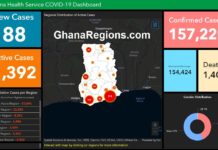
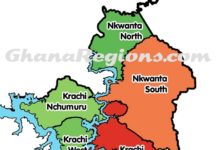
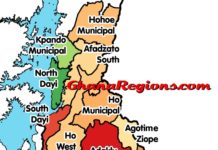
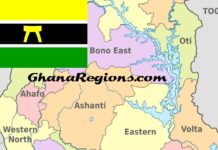












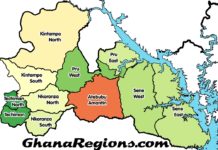
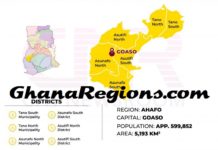


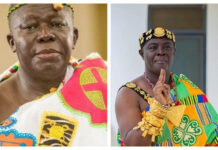


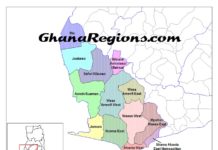
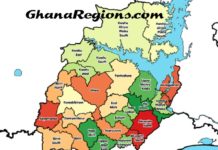




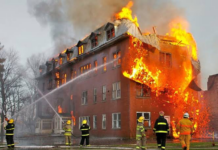



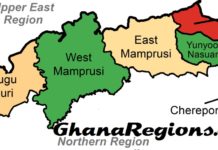

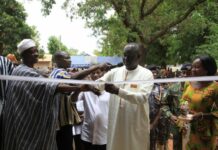










![Morocco knock out Spain on 3-0 penalties to reach FIFA World Cup 2022 quarter-final, Morocco vs Spain (0-0) (3-0) [Video]. Morocco knock out Spain on 3-0 penalties](https://ghanaregions.com/wp-content/uploads/2022/12/Watch-Morocco-vs-Spain-0-0-and-3-0-penalties-218x150.jpg)





